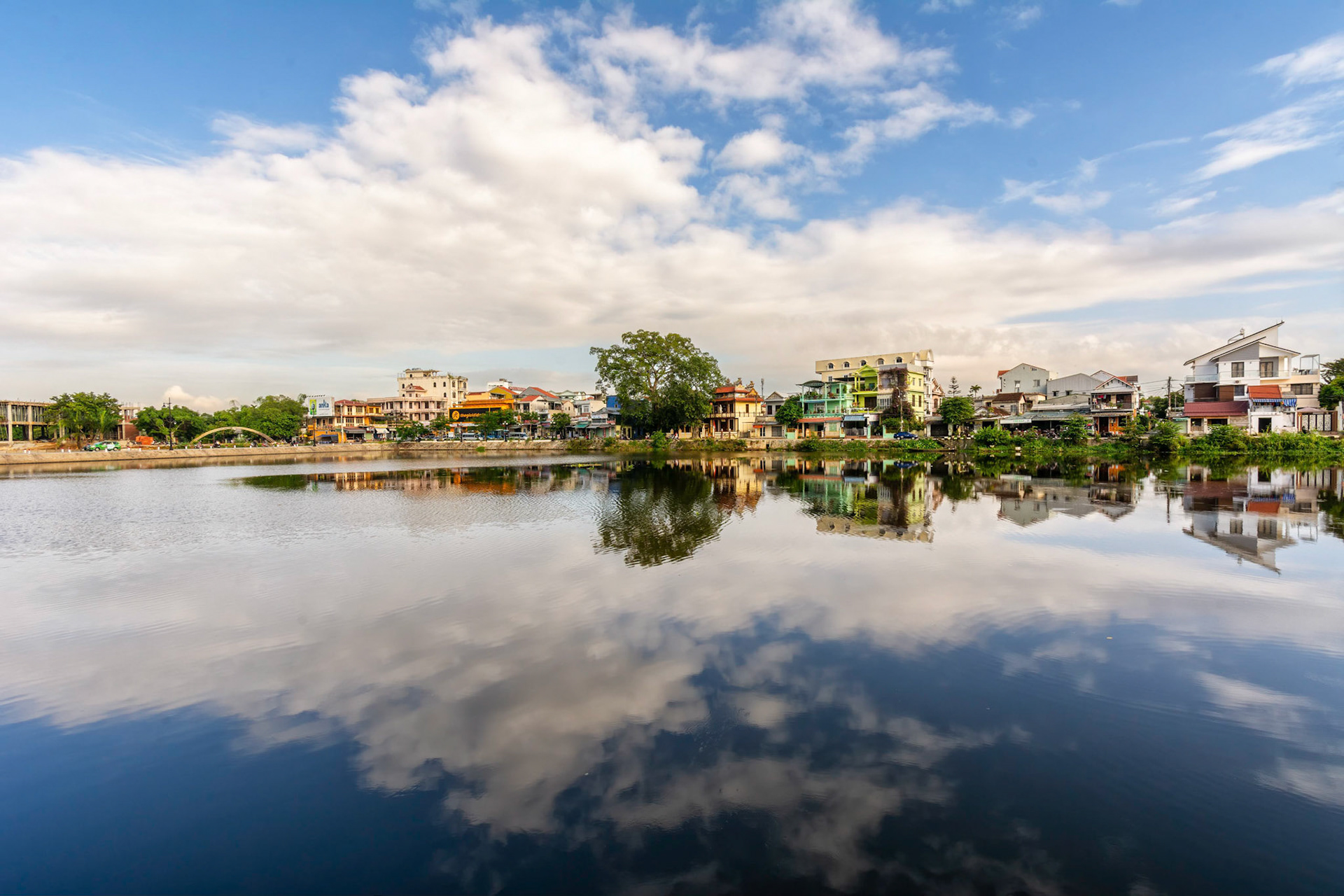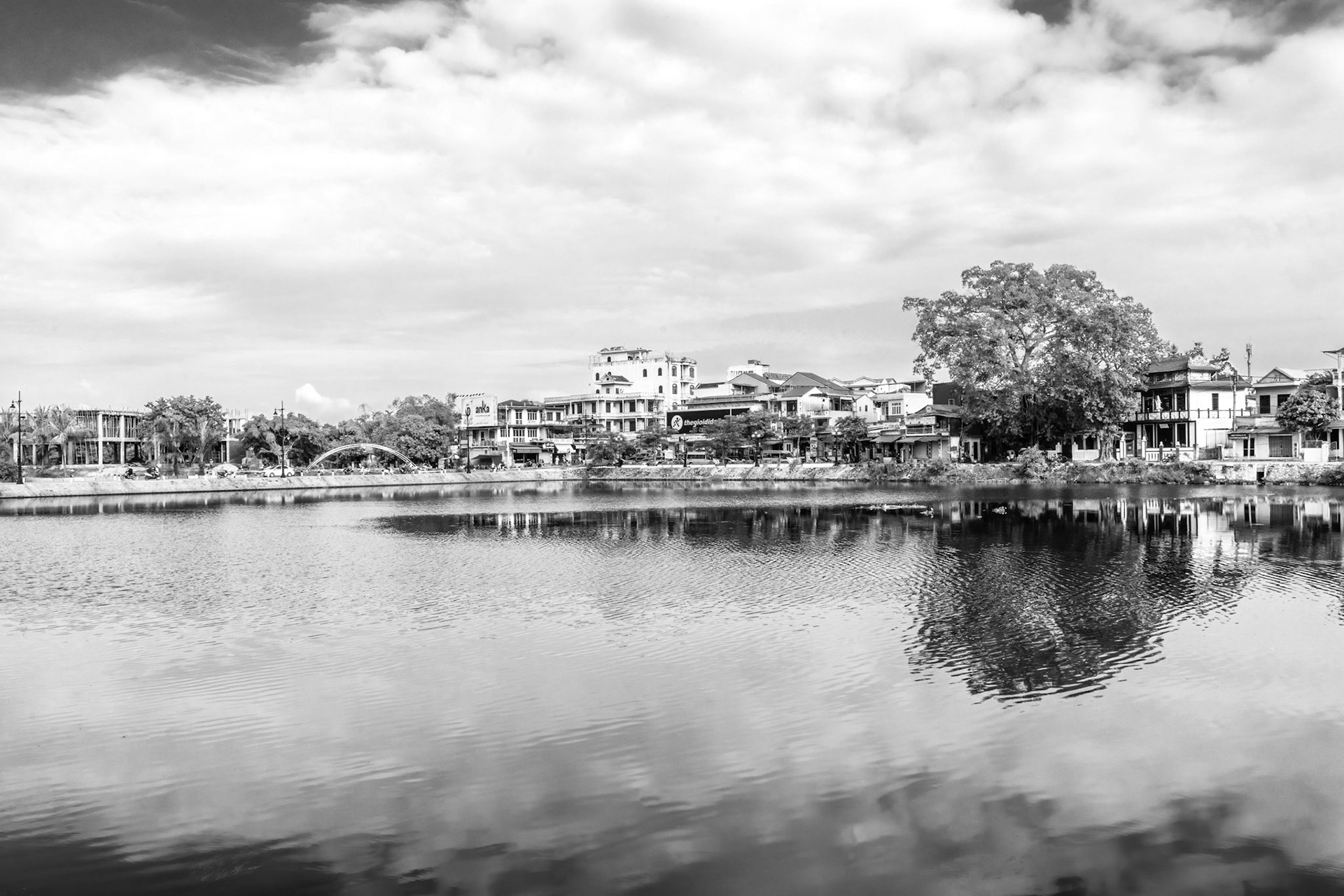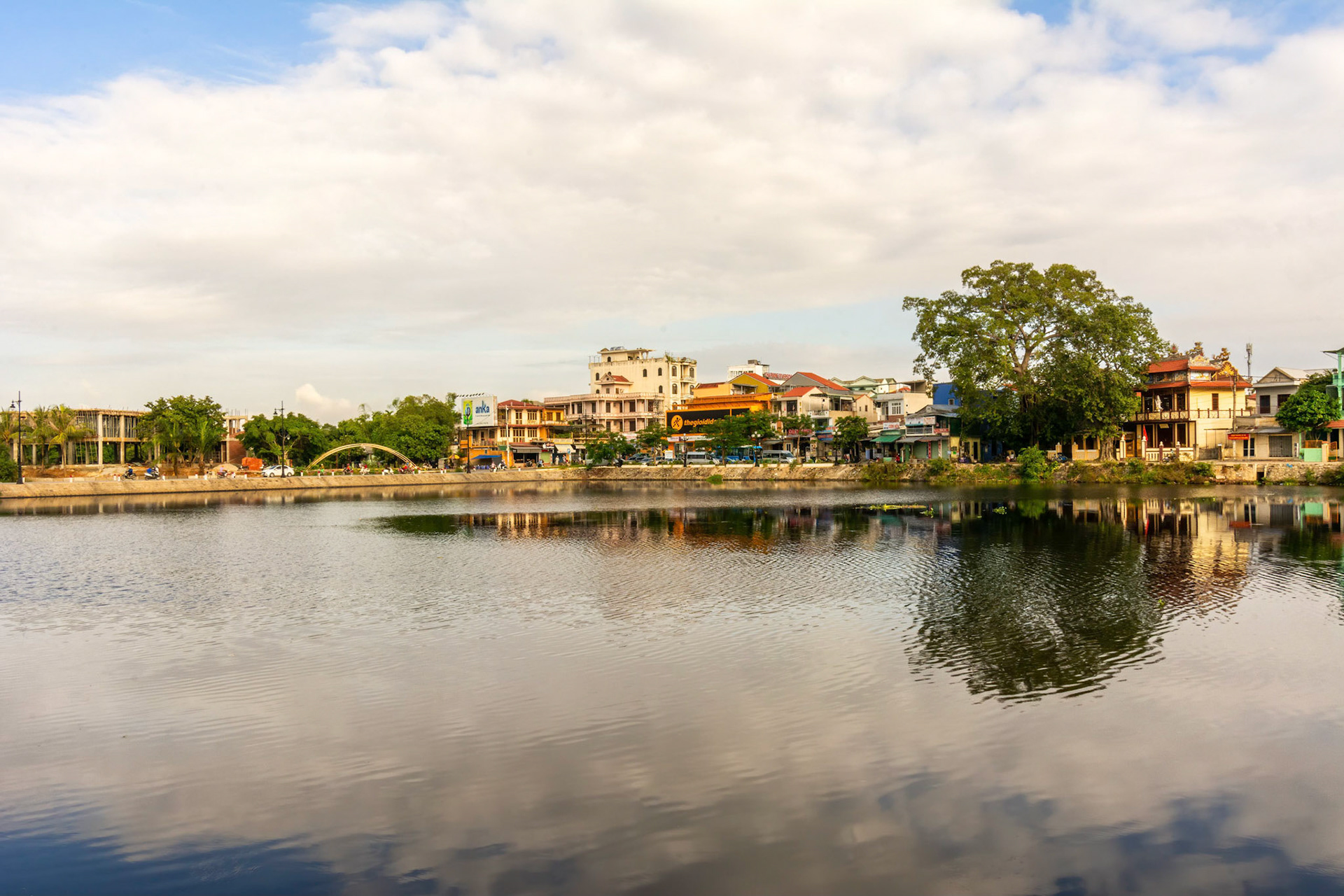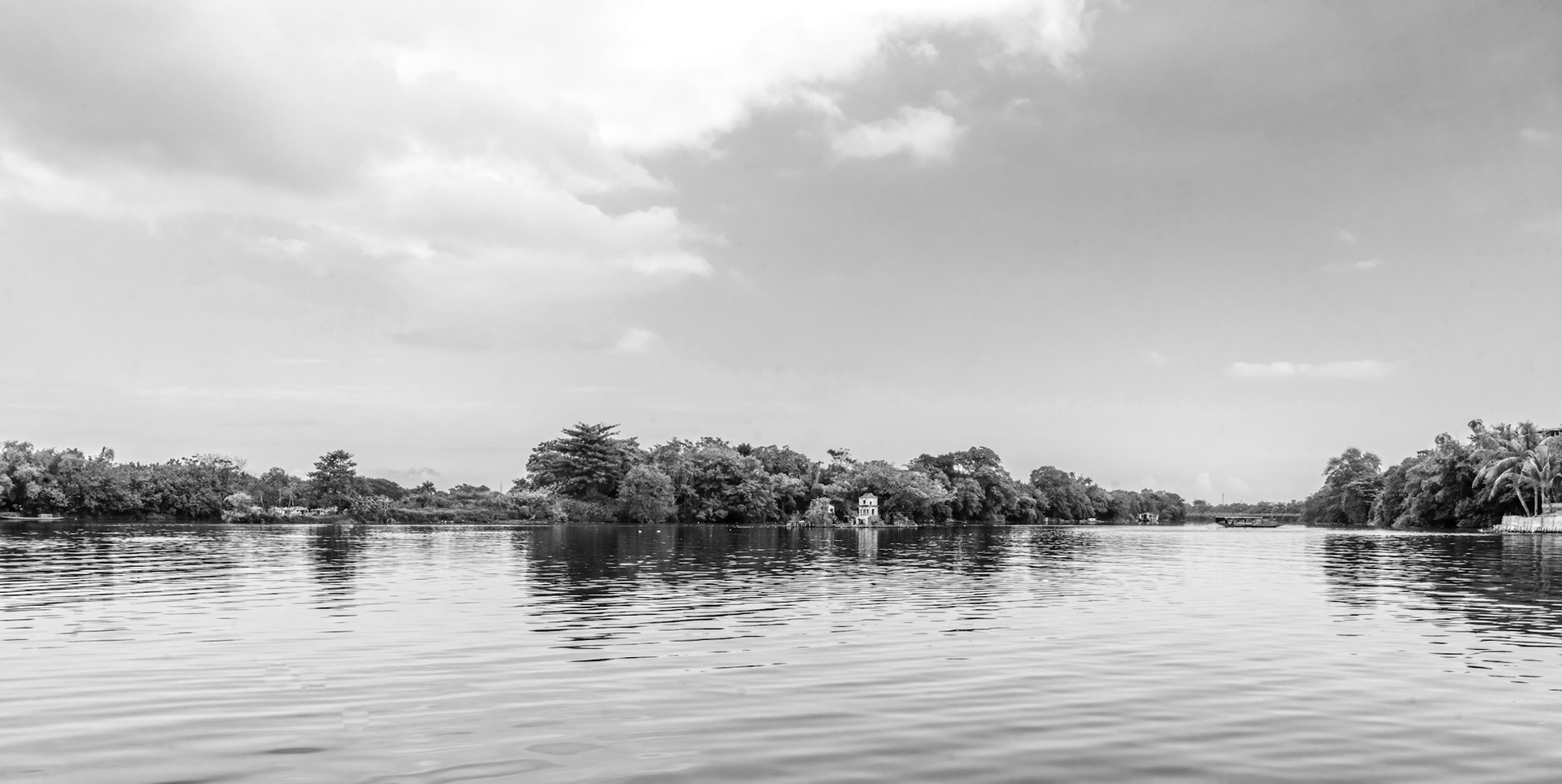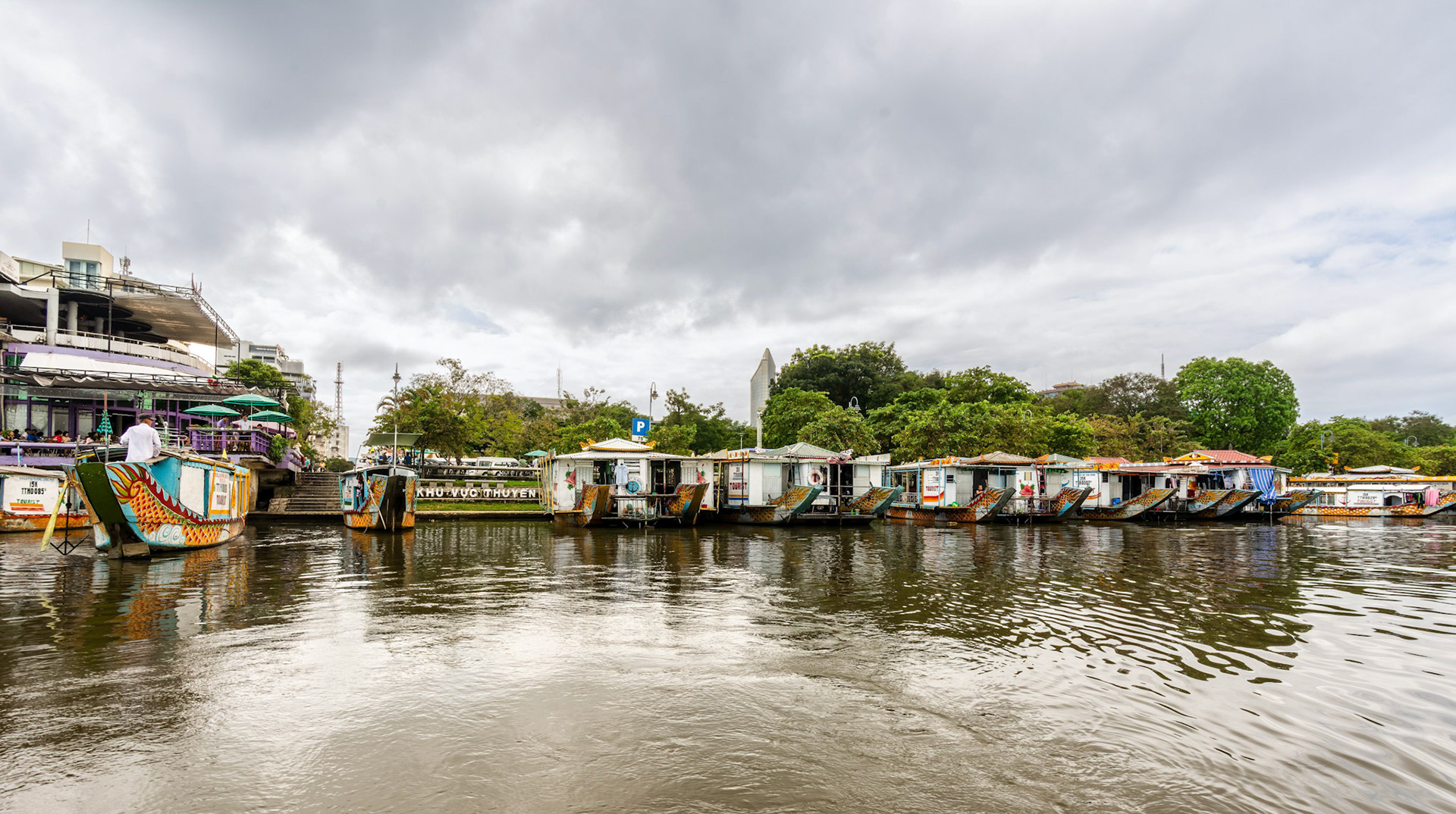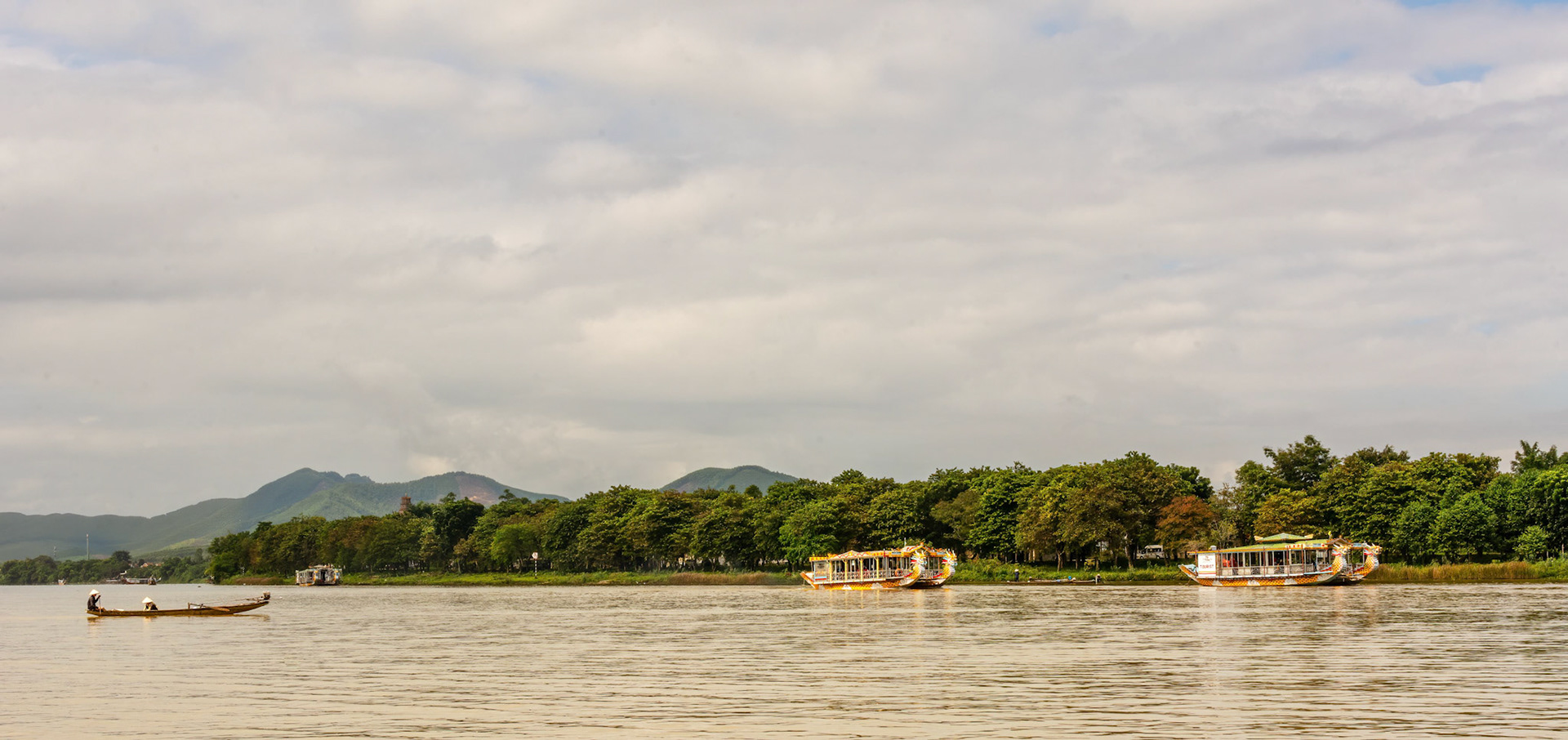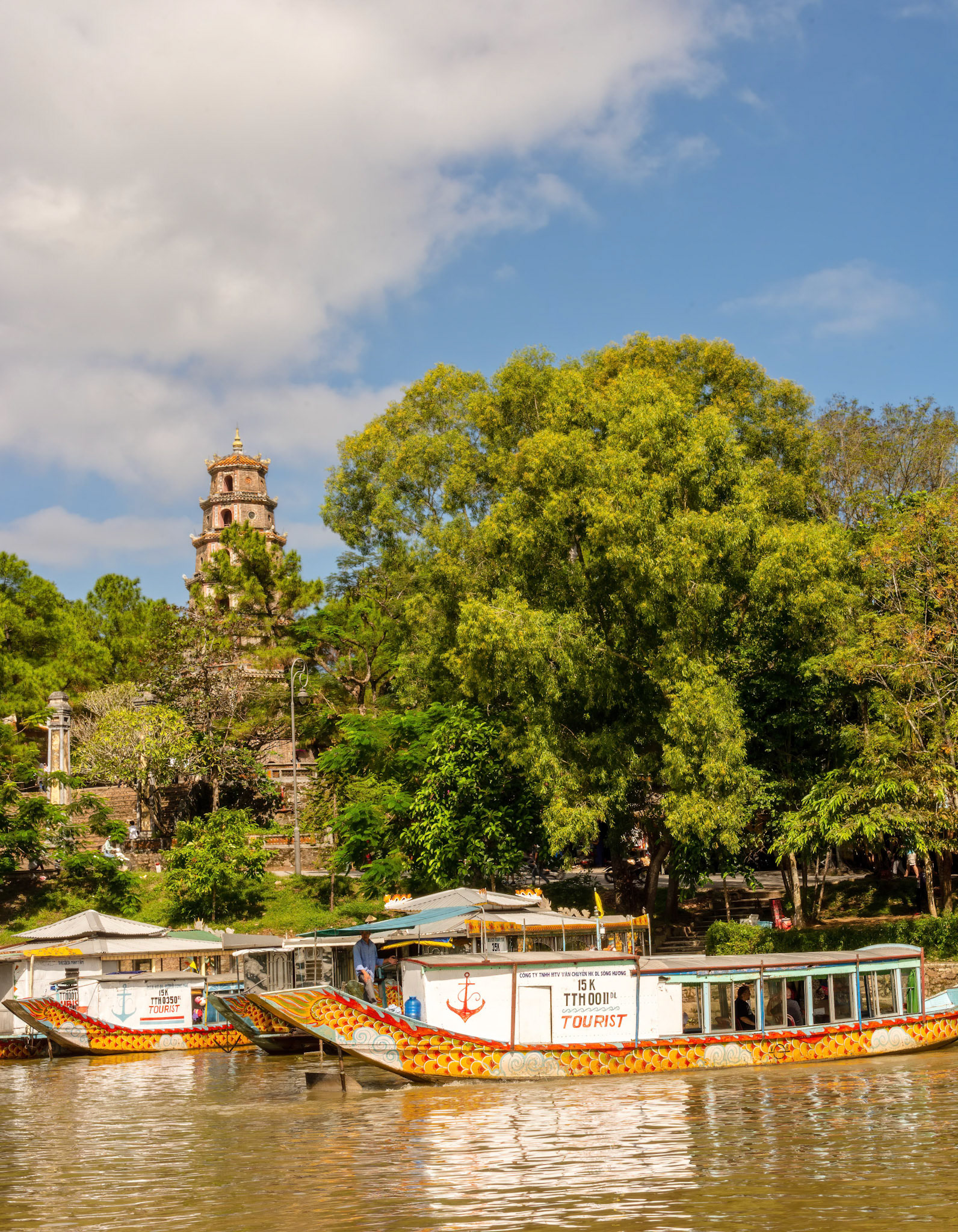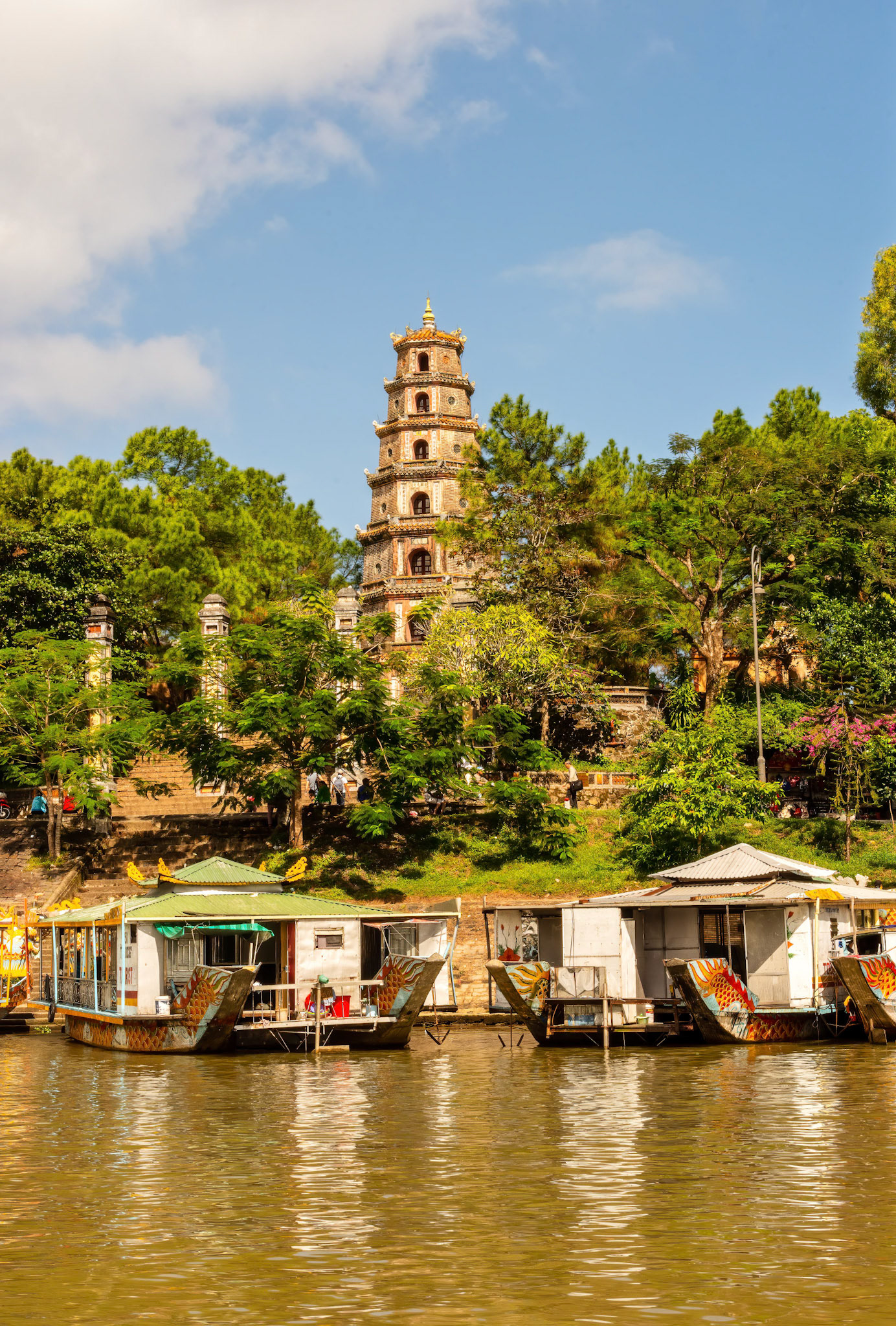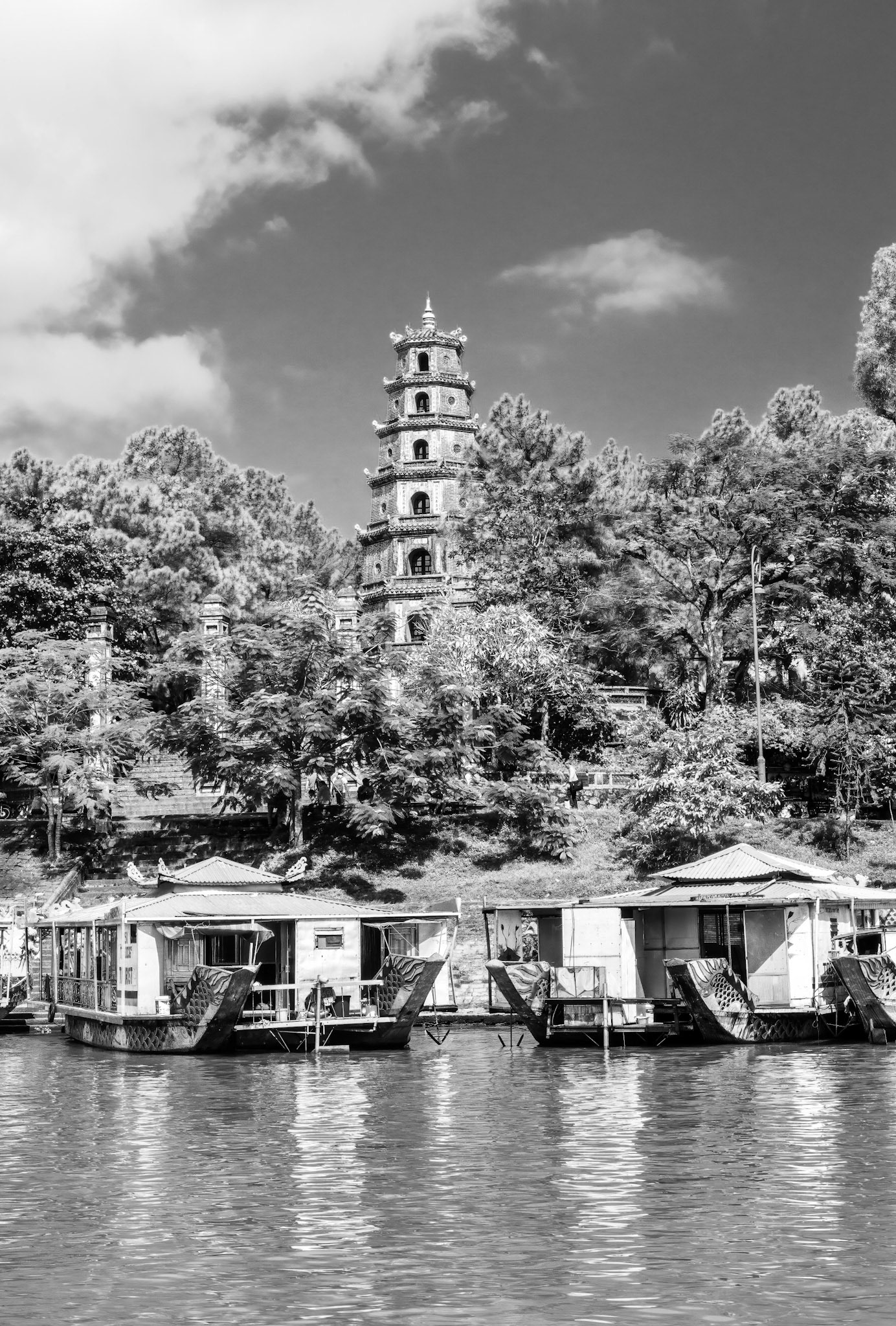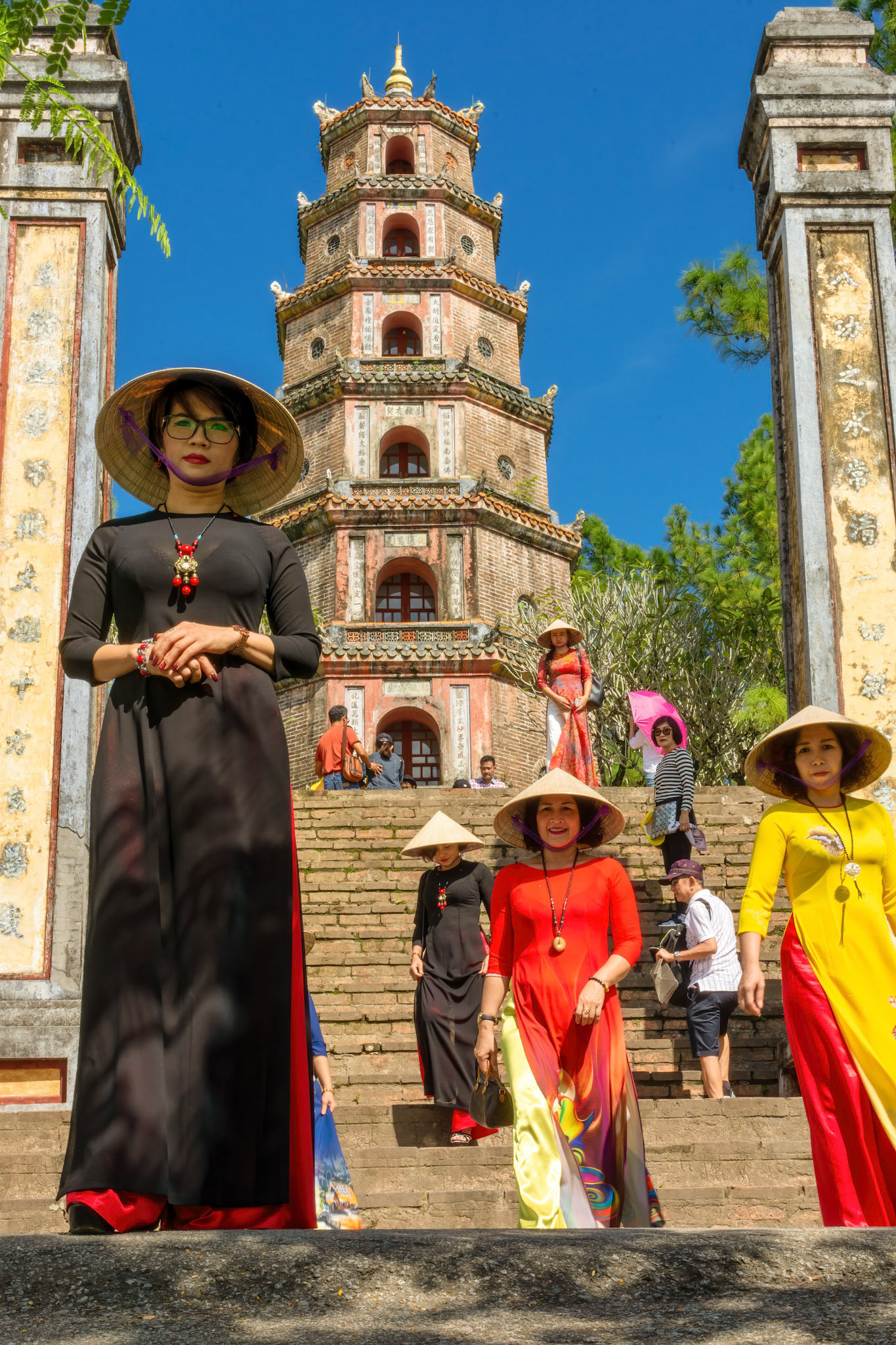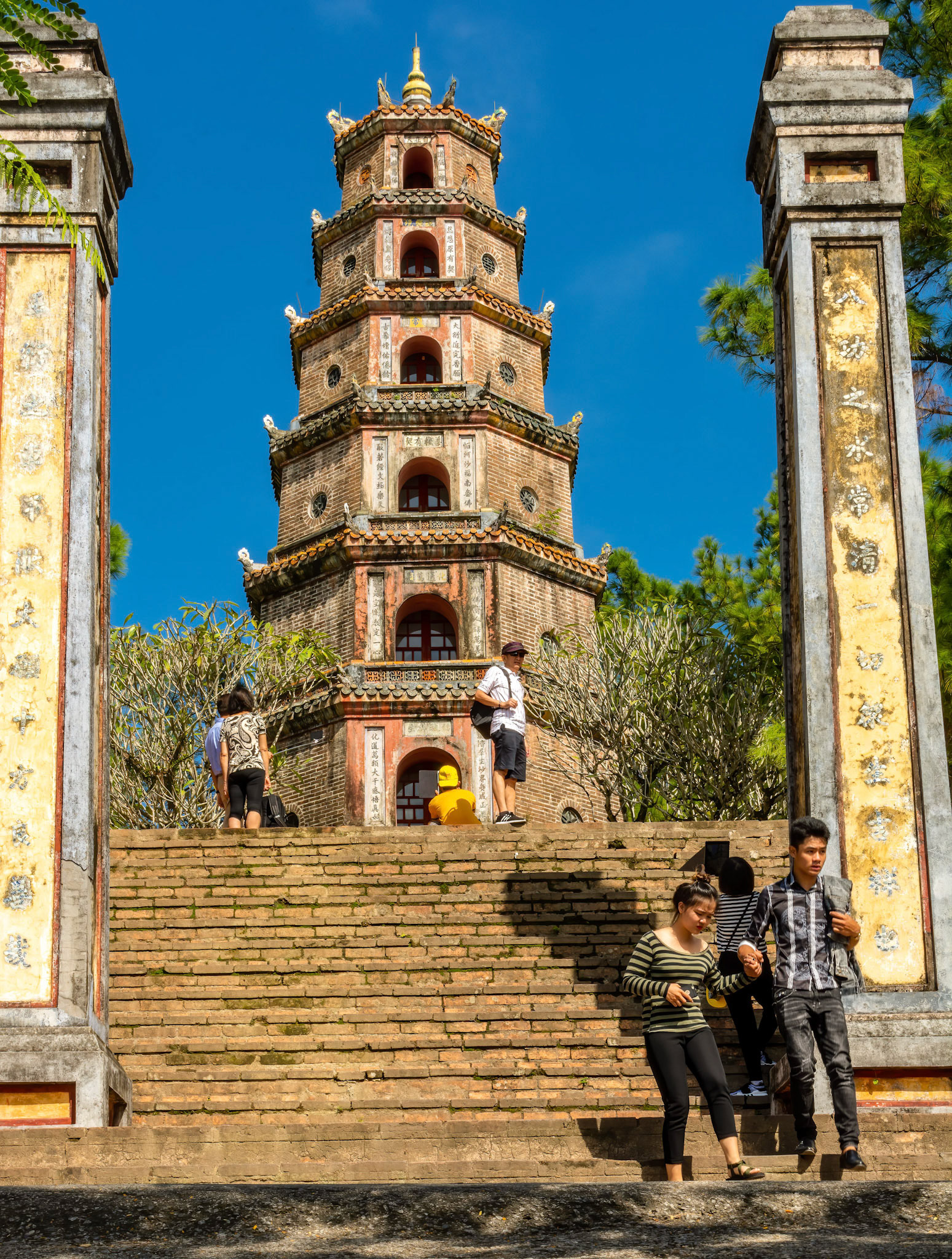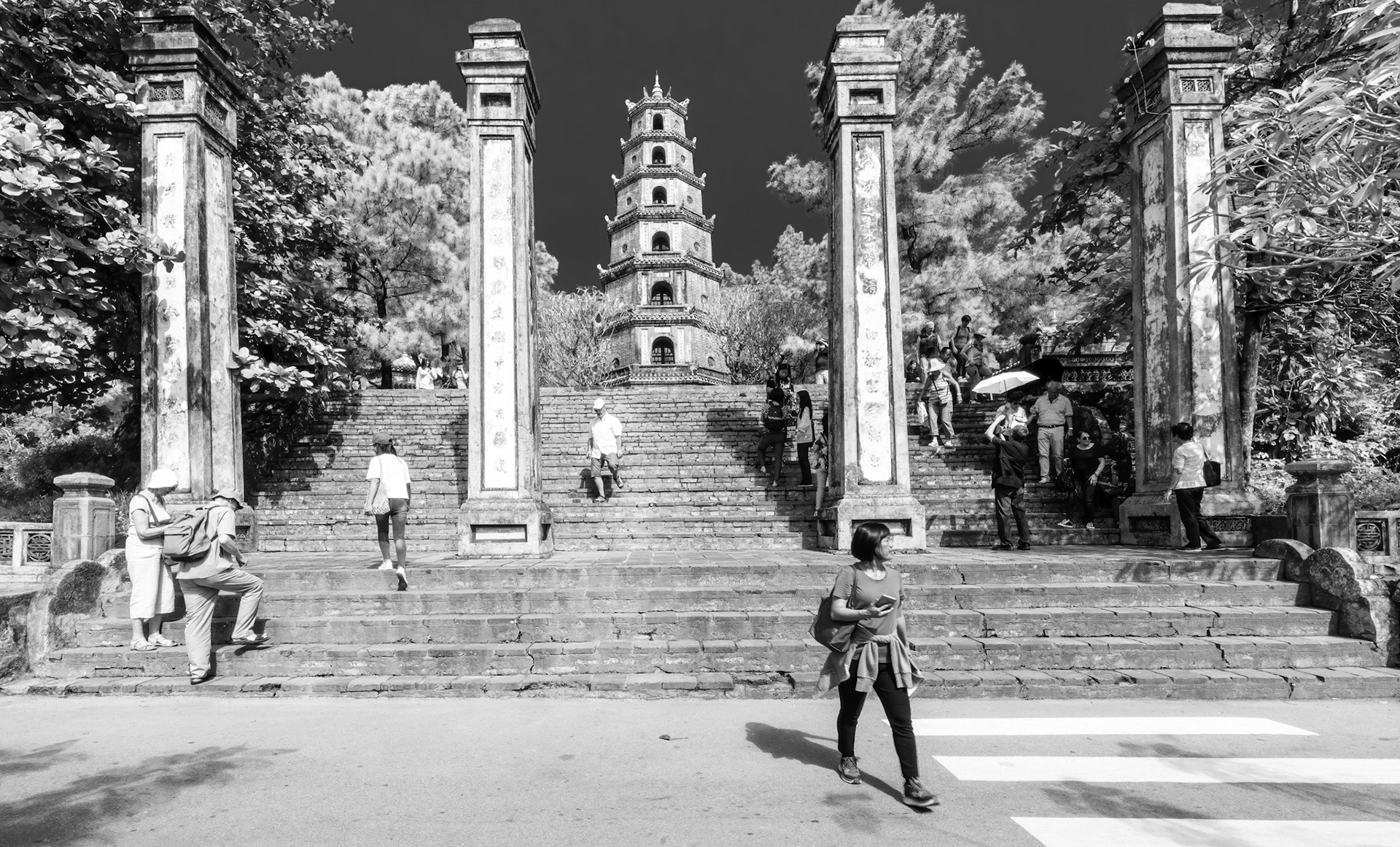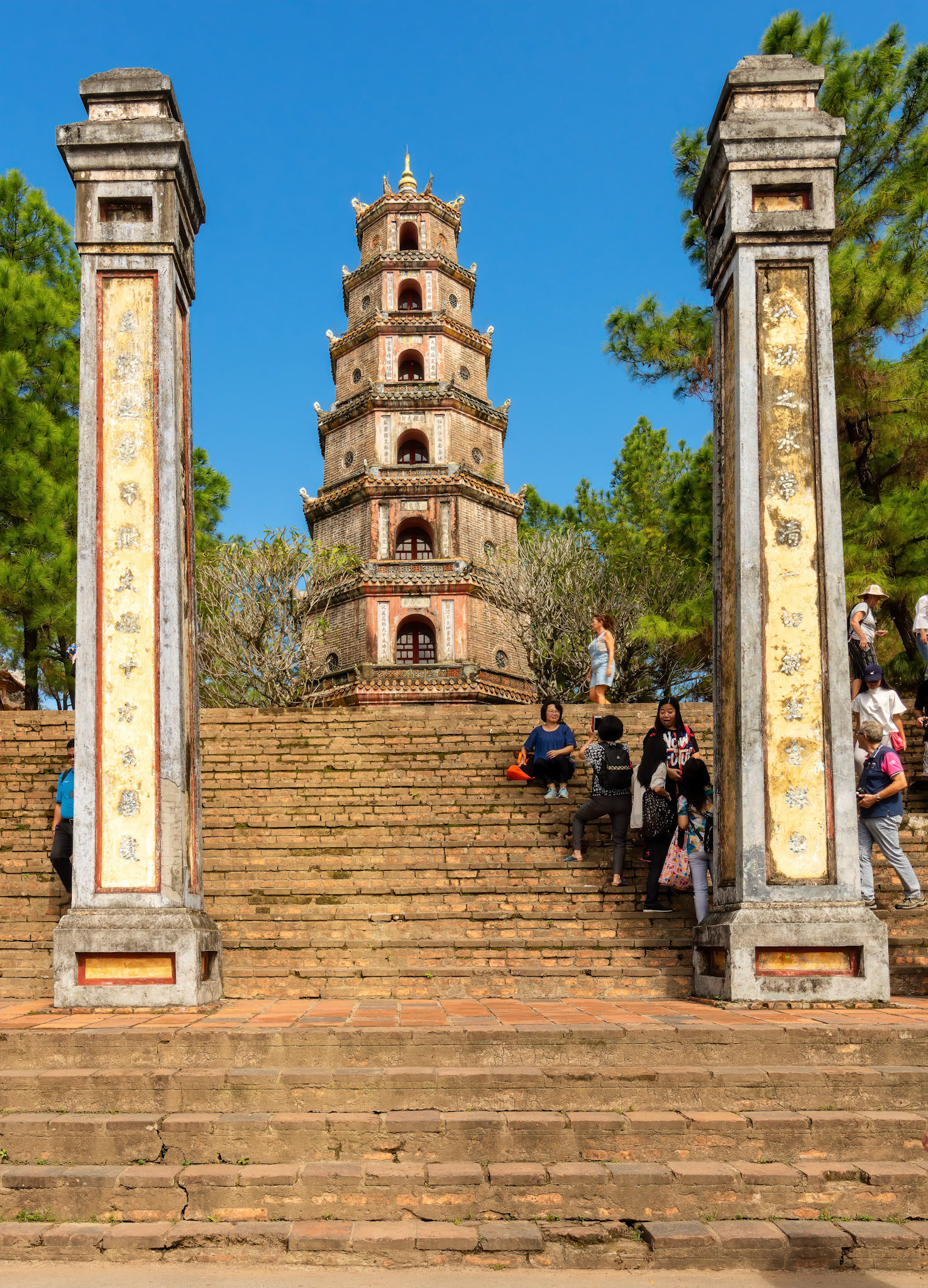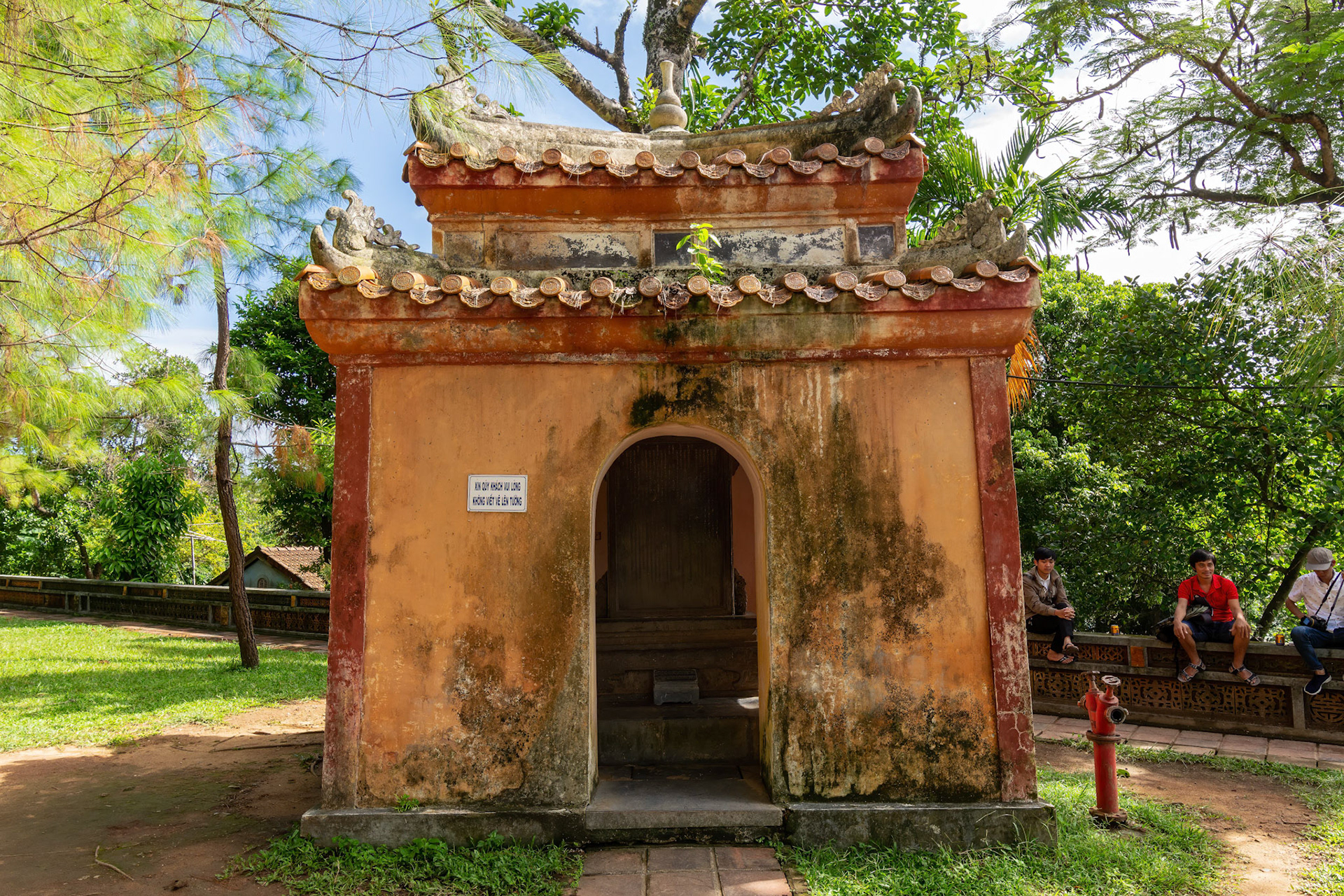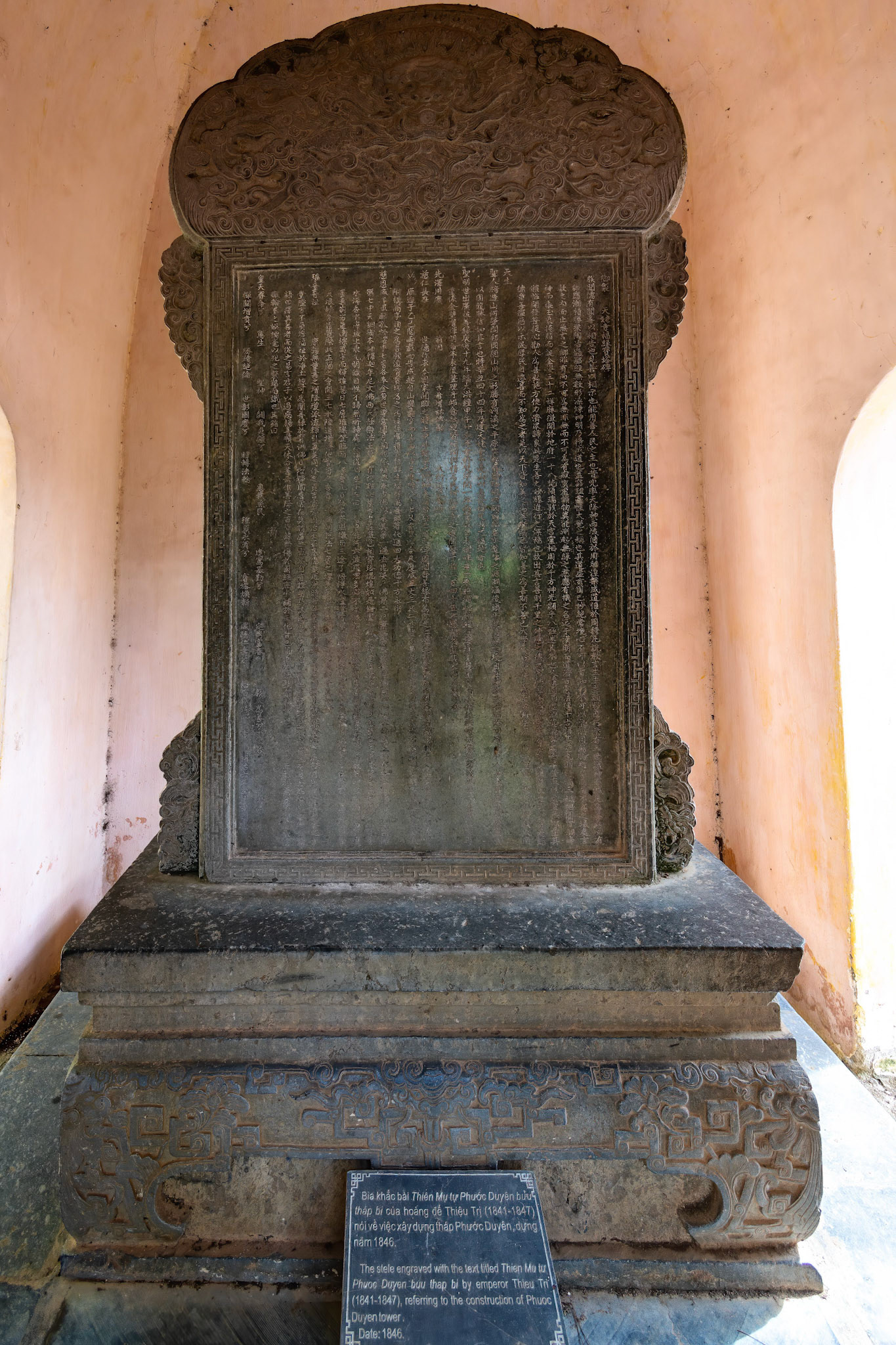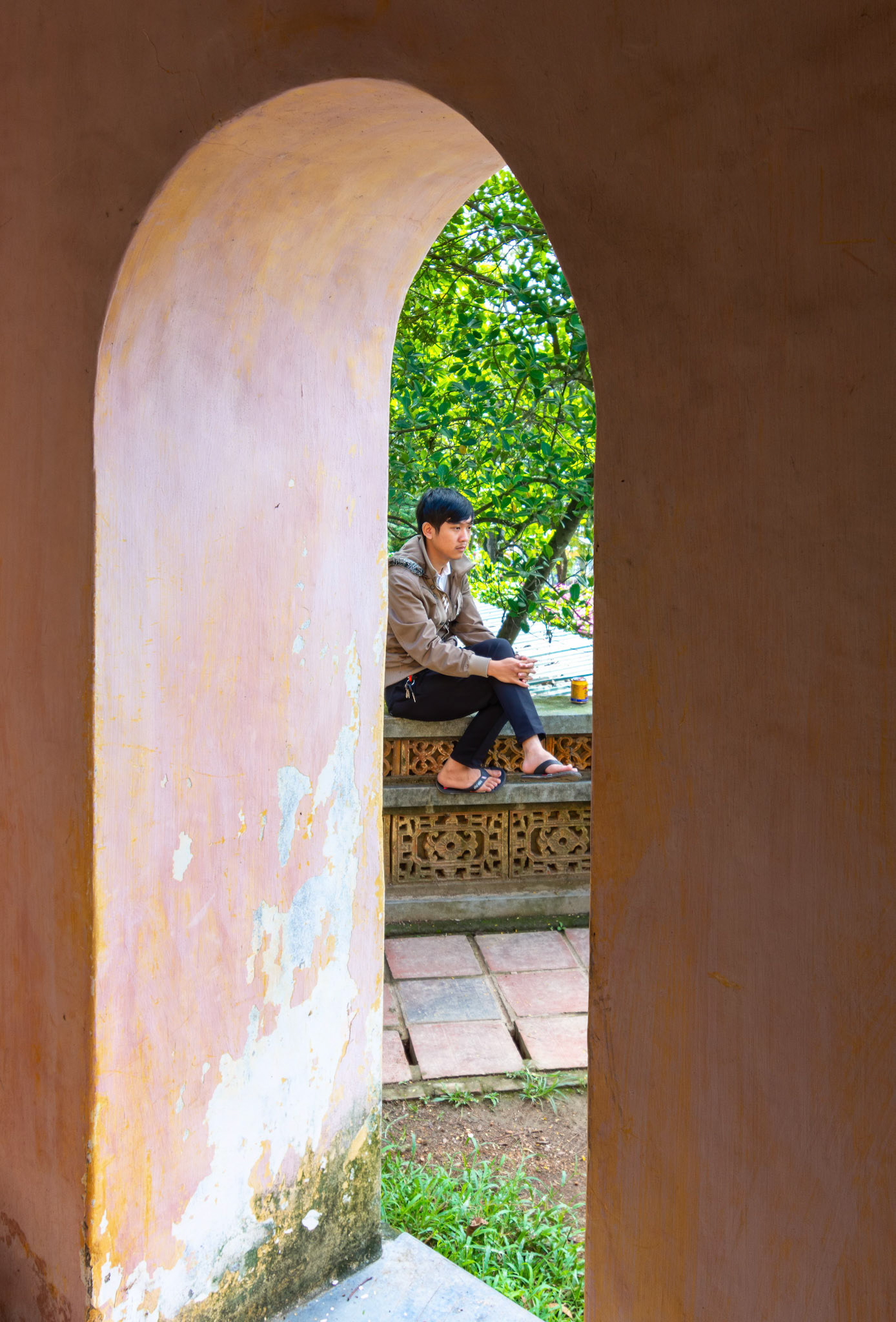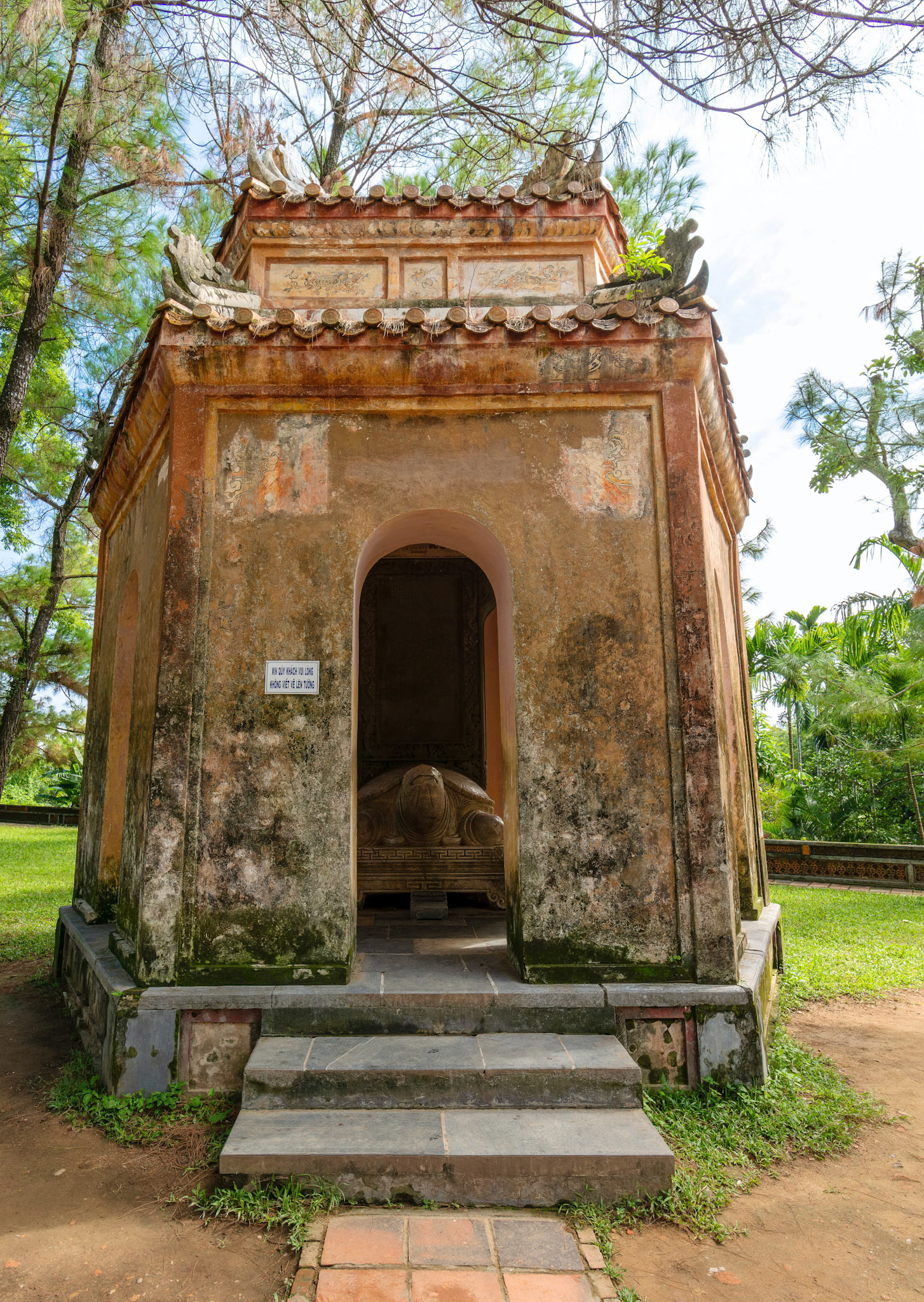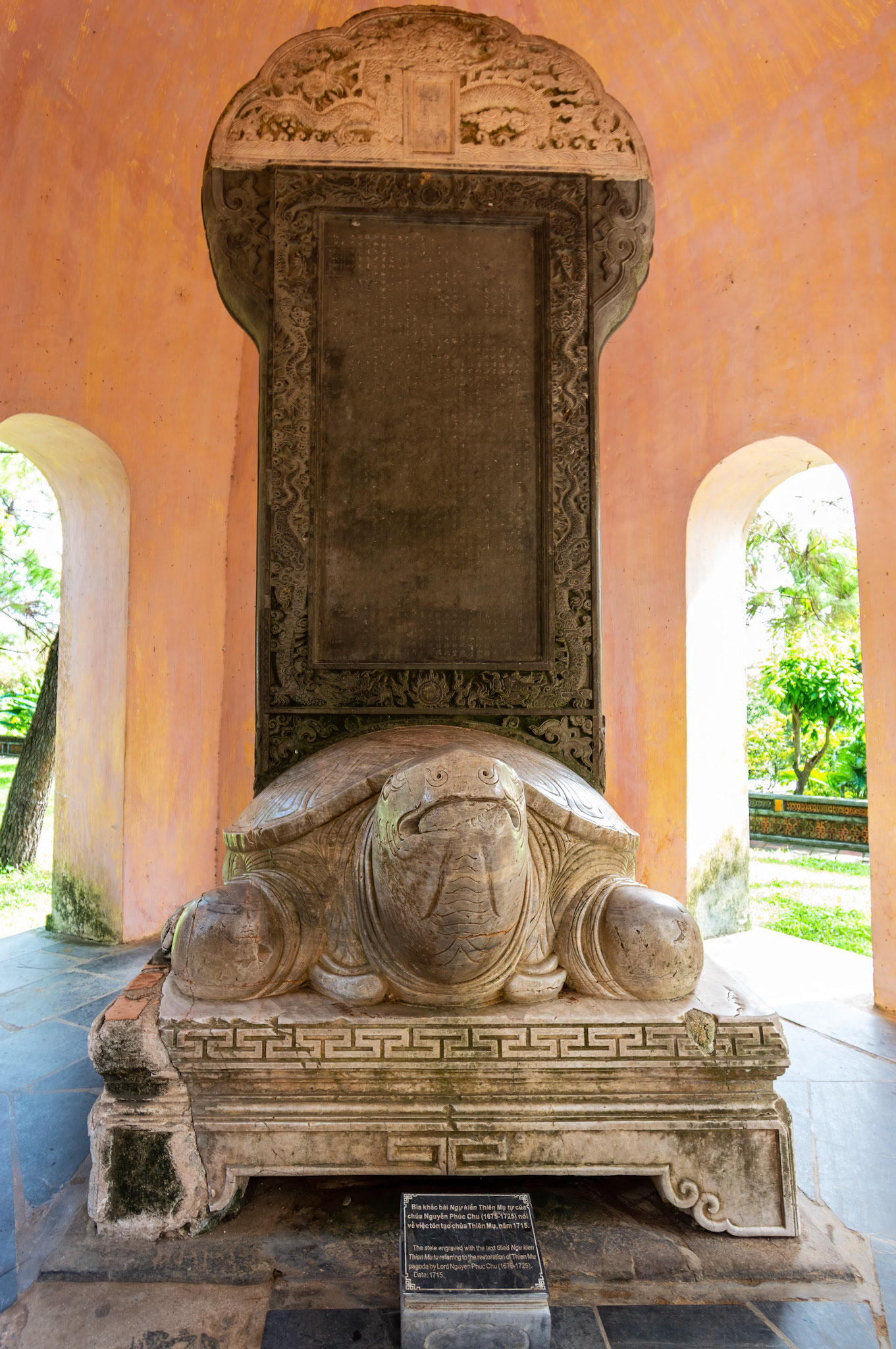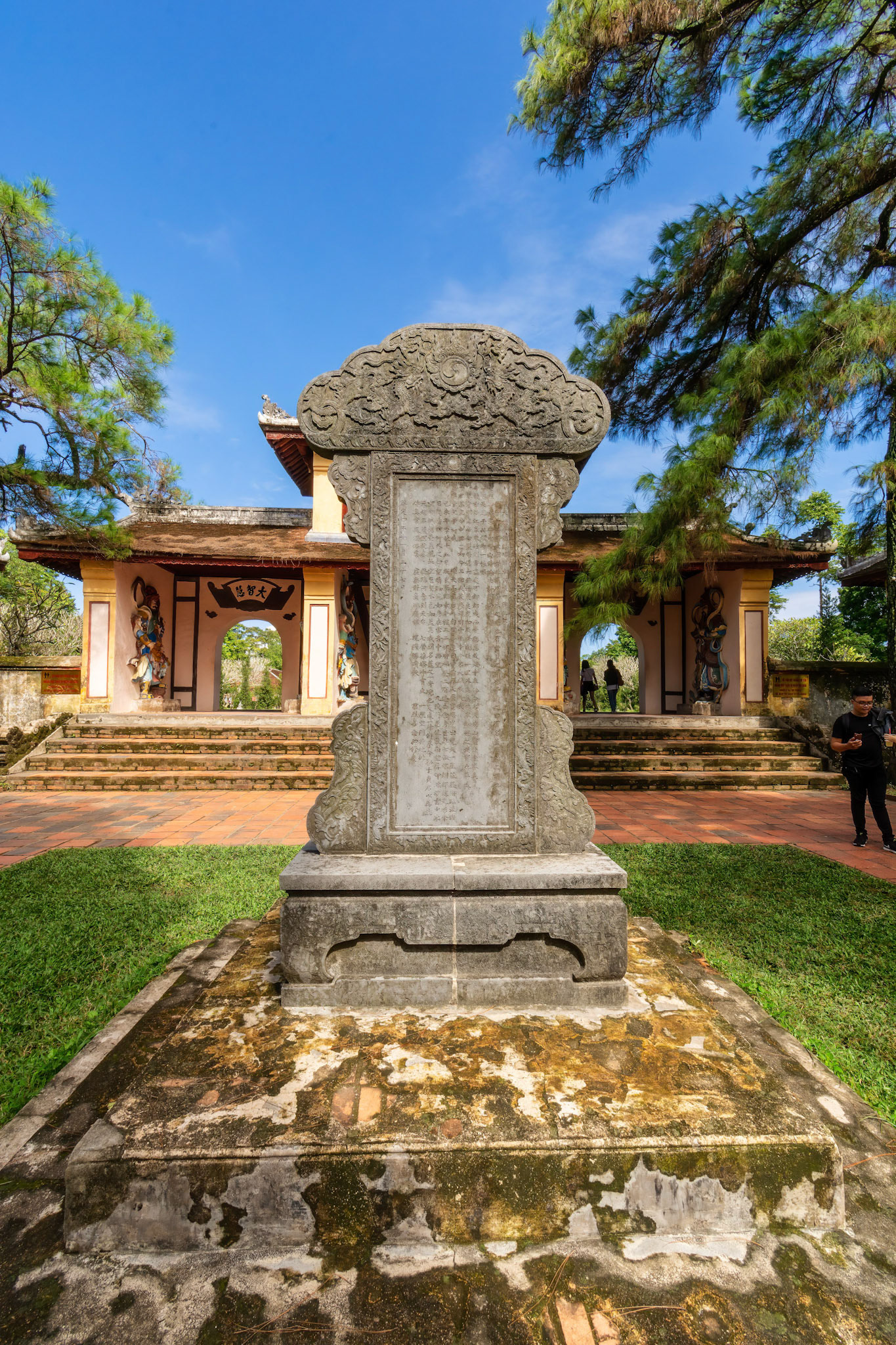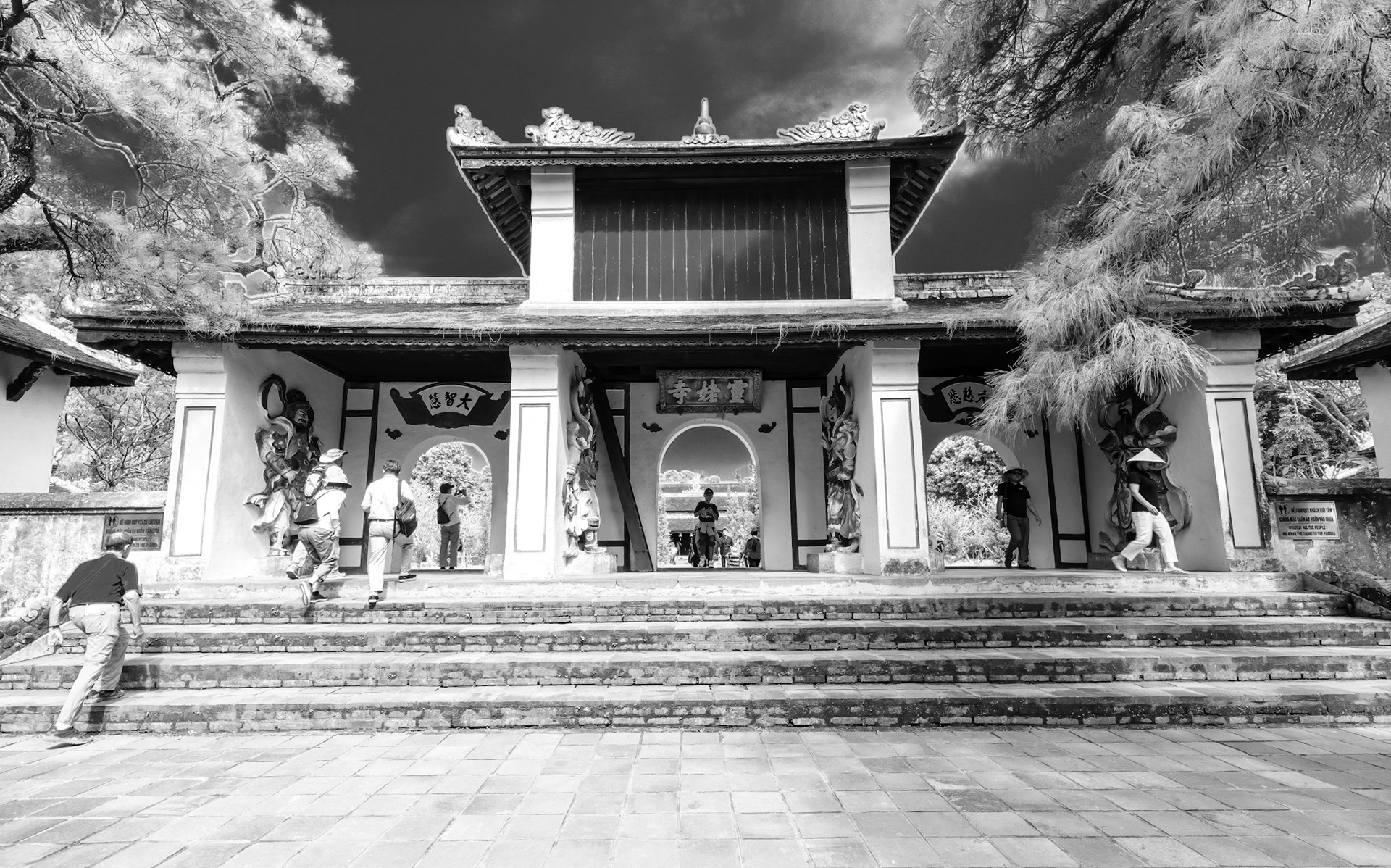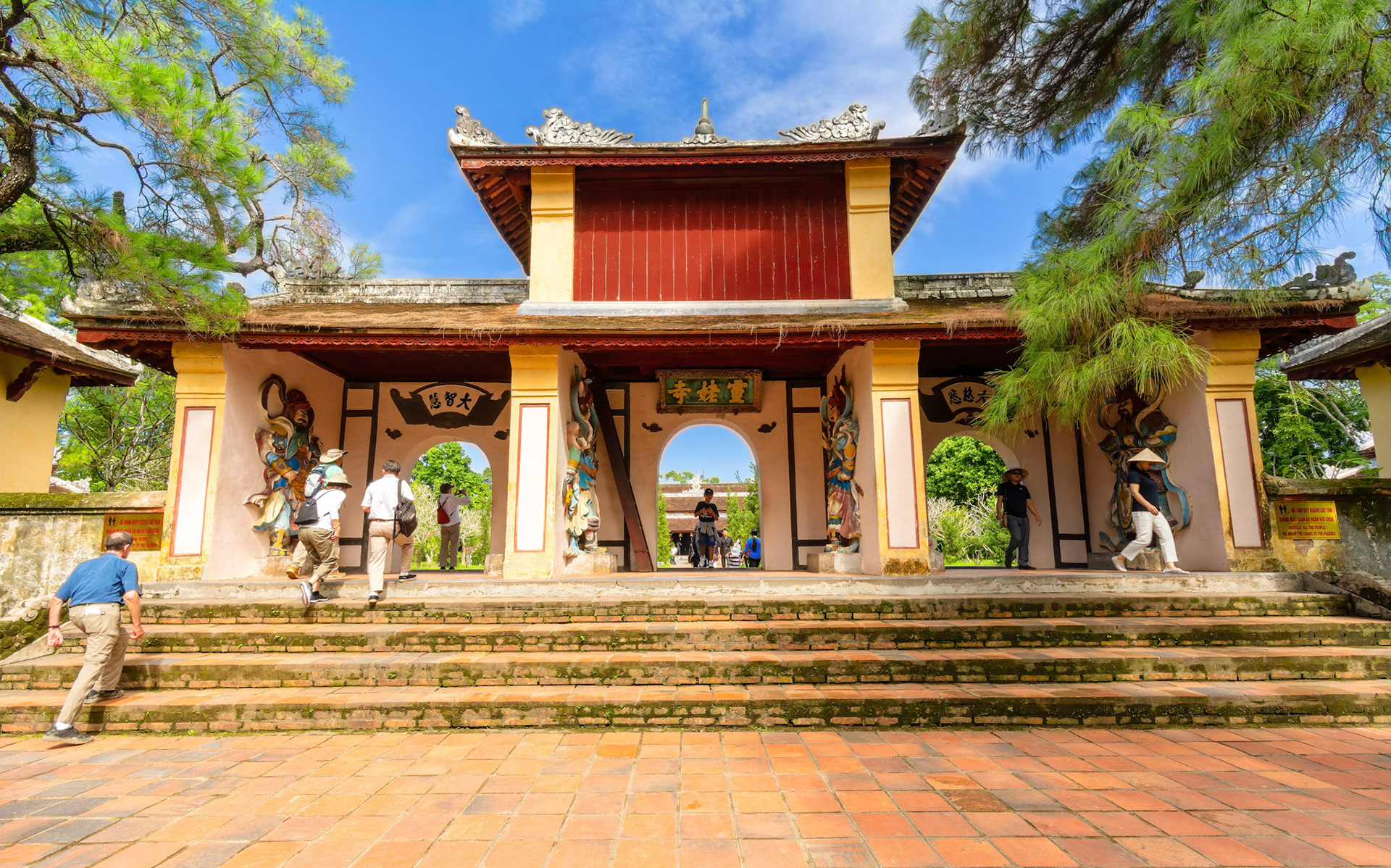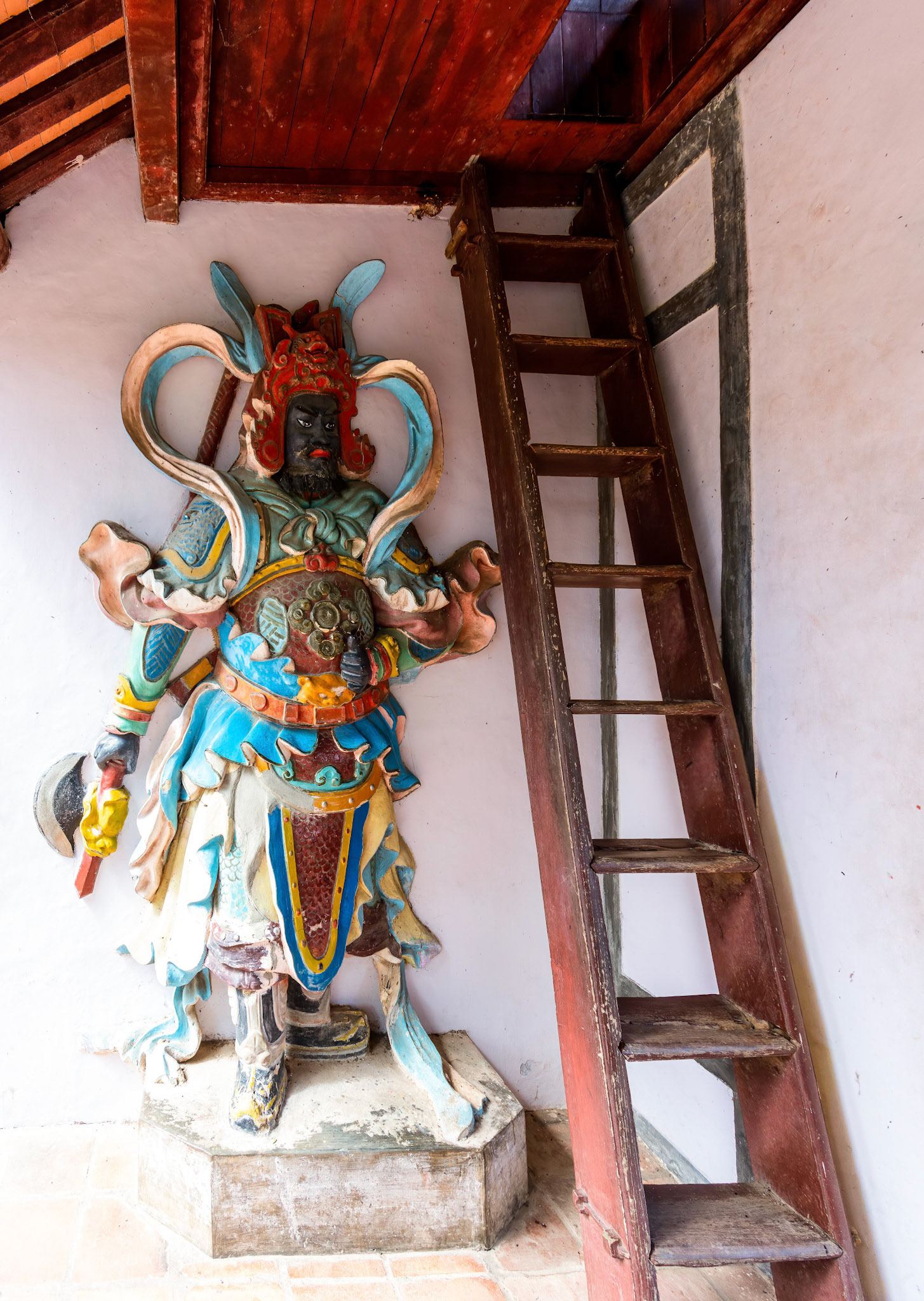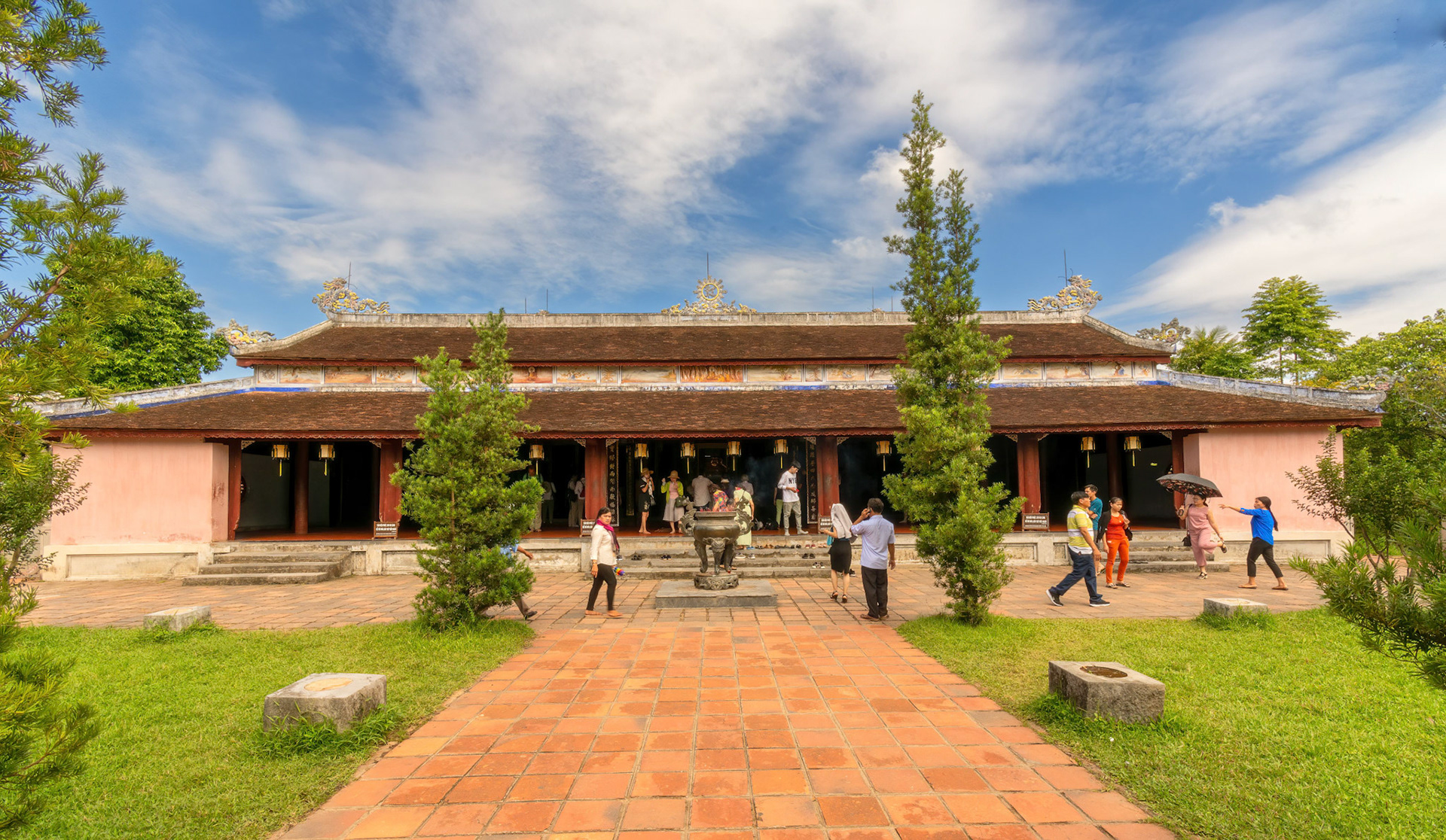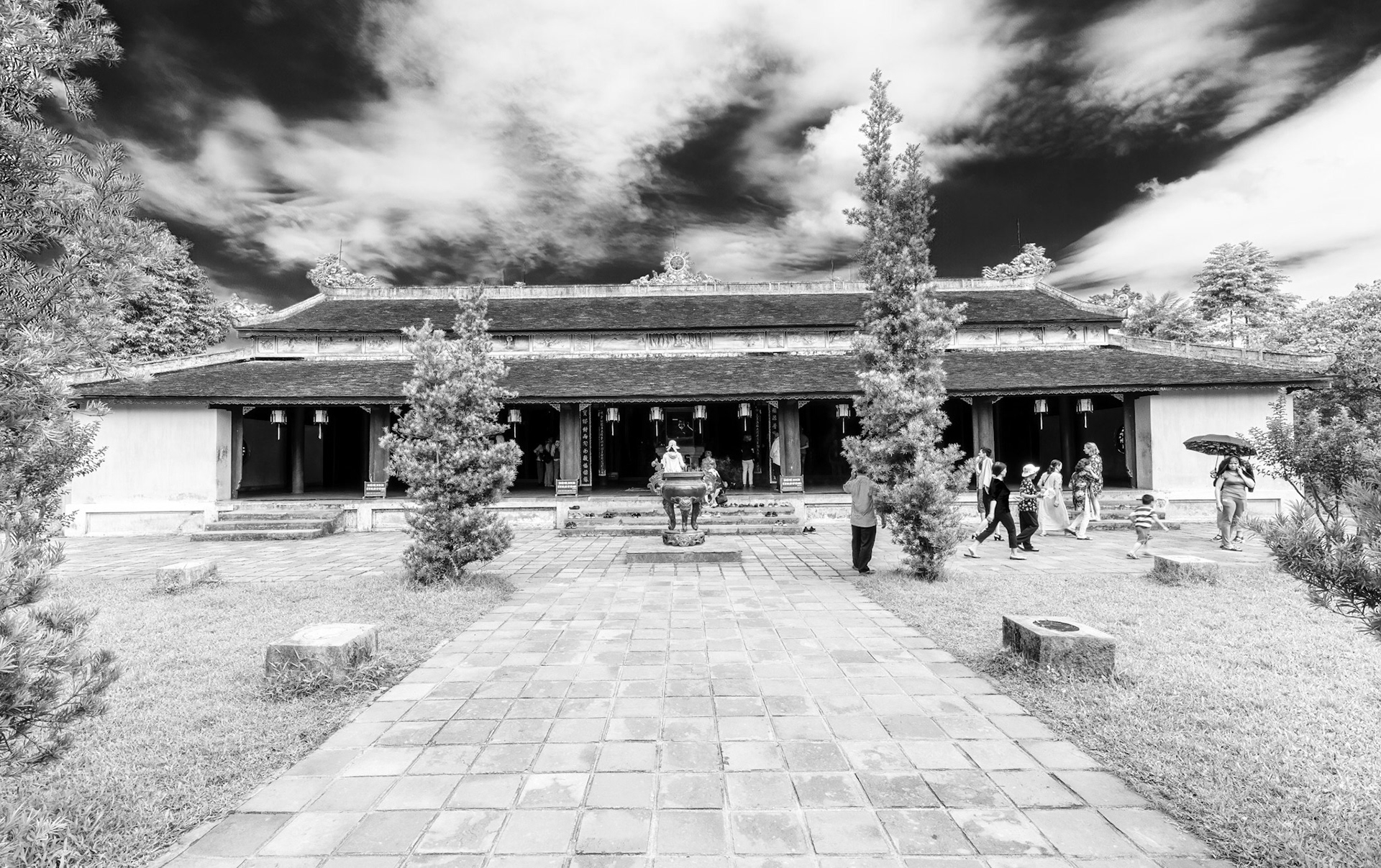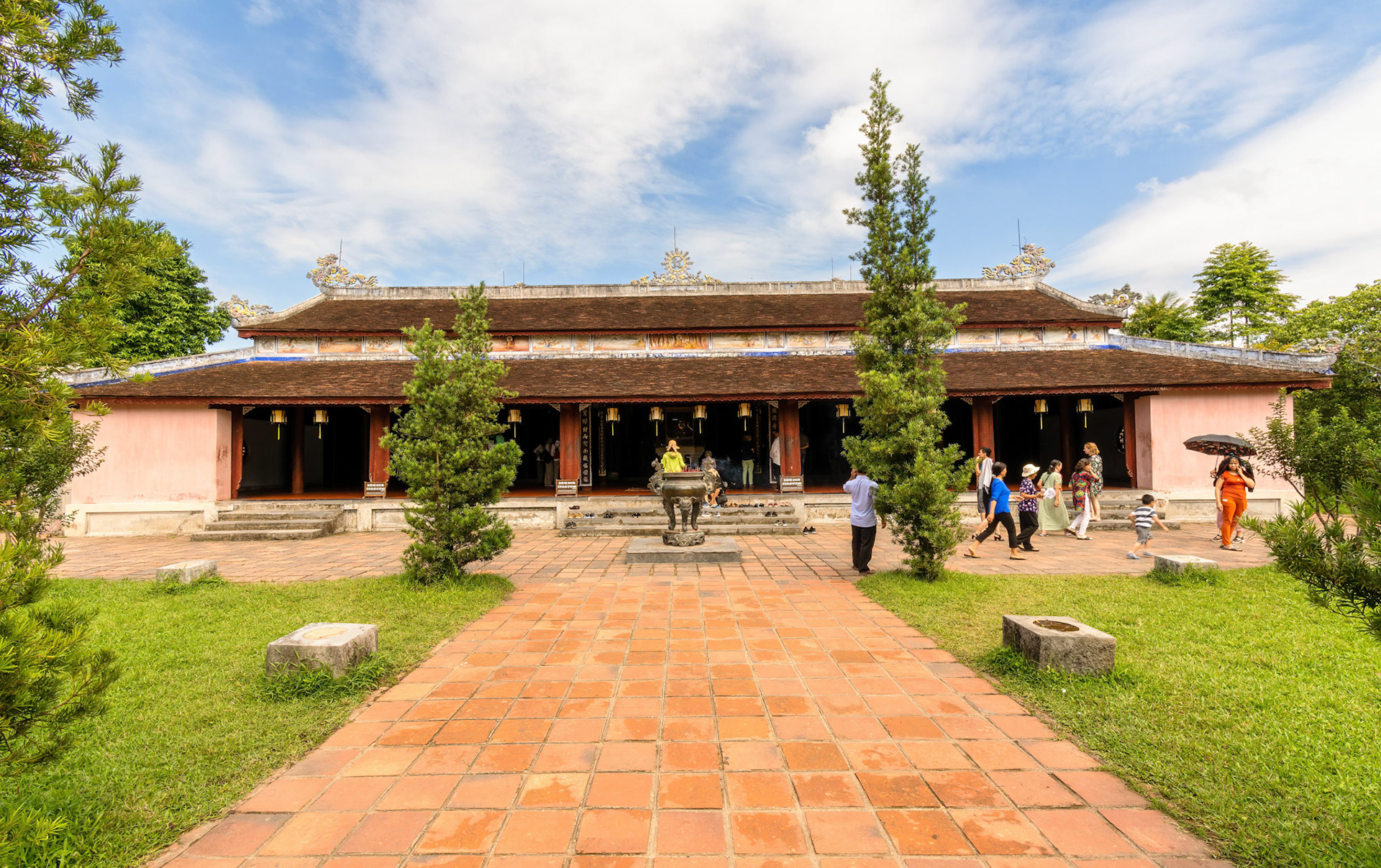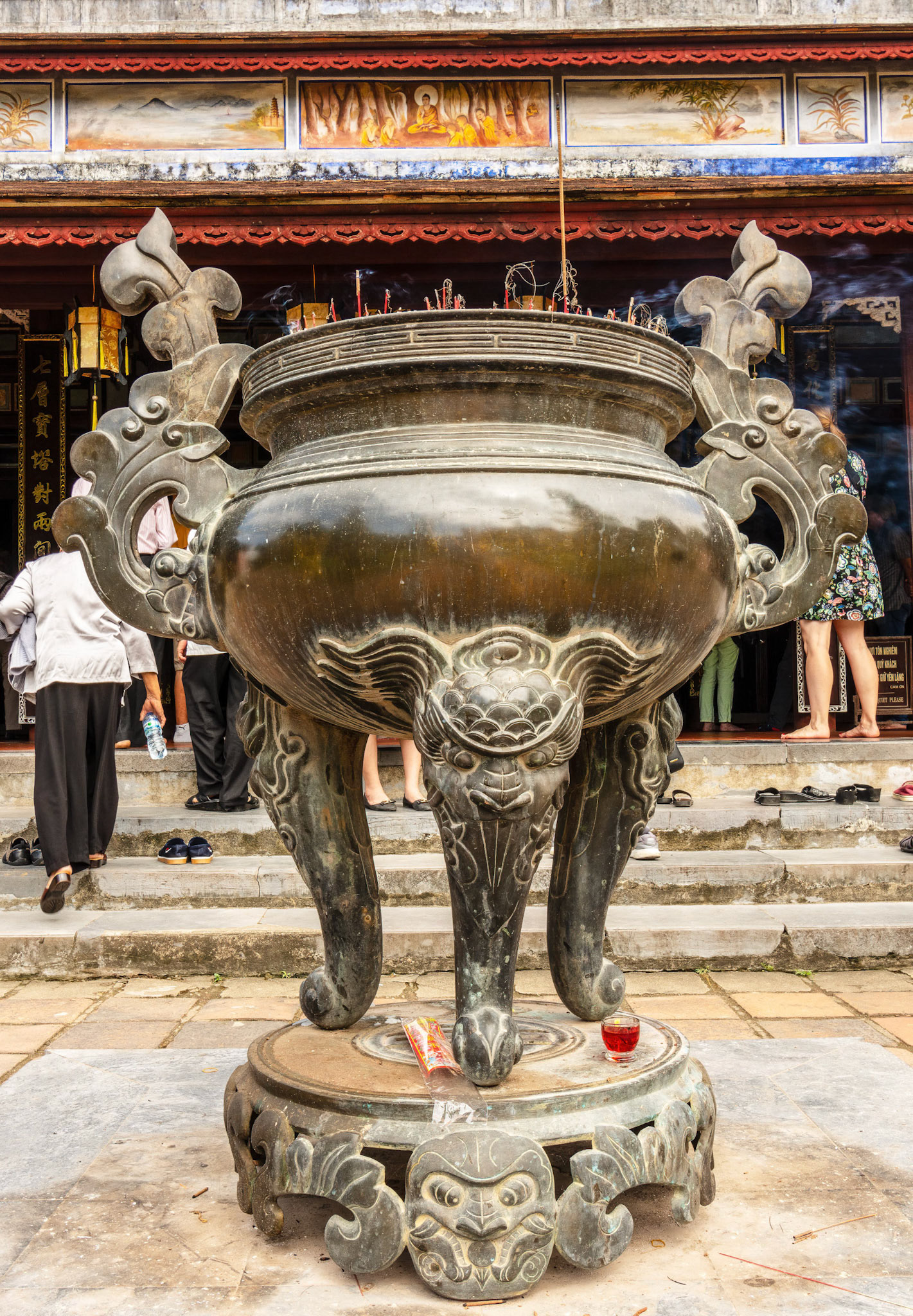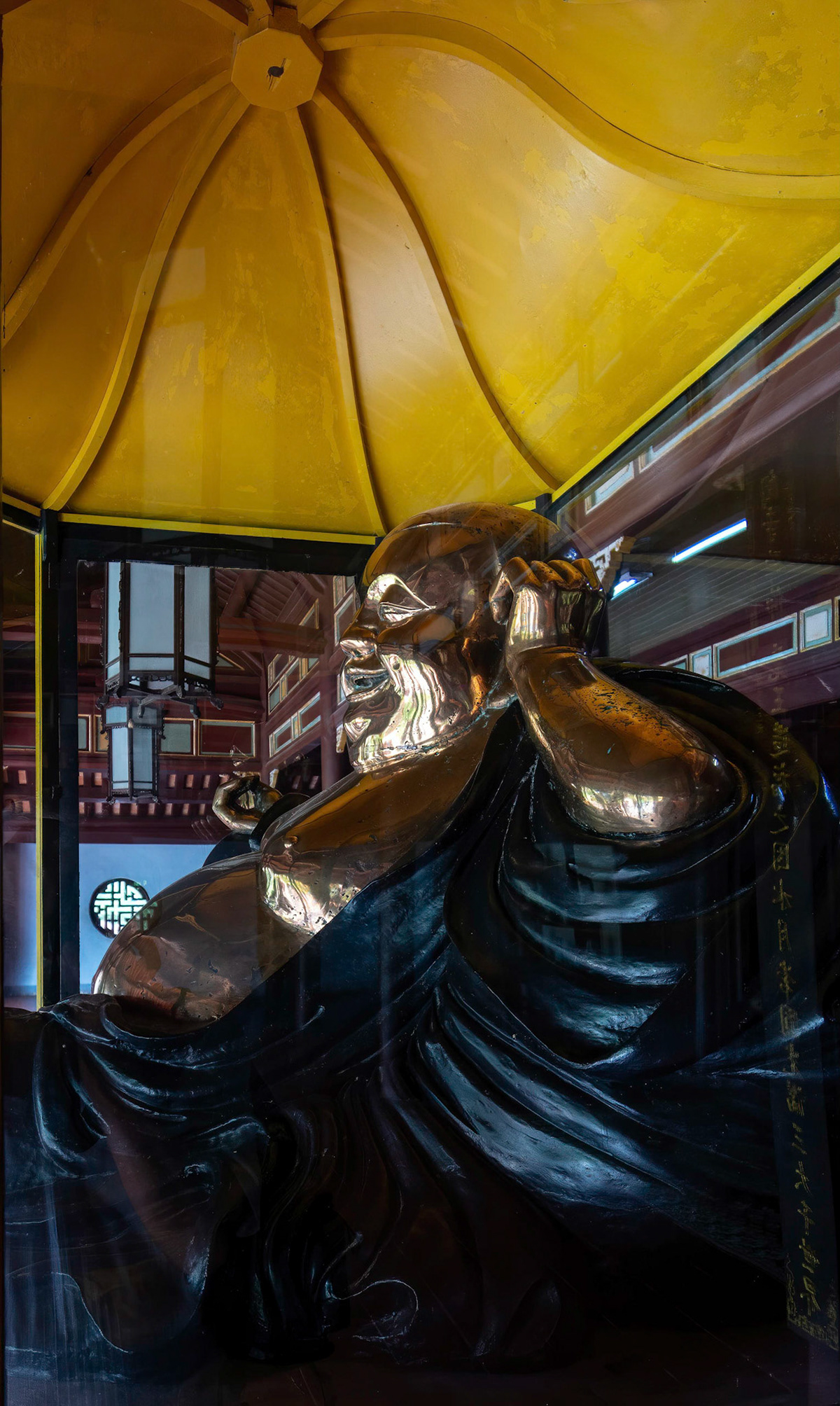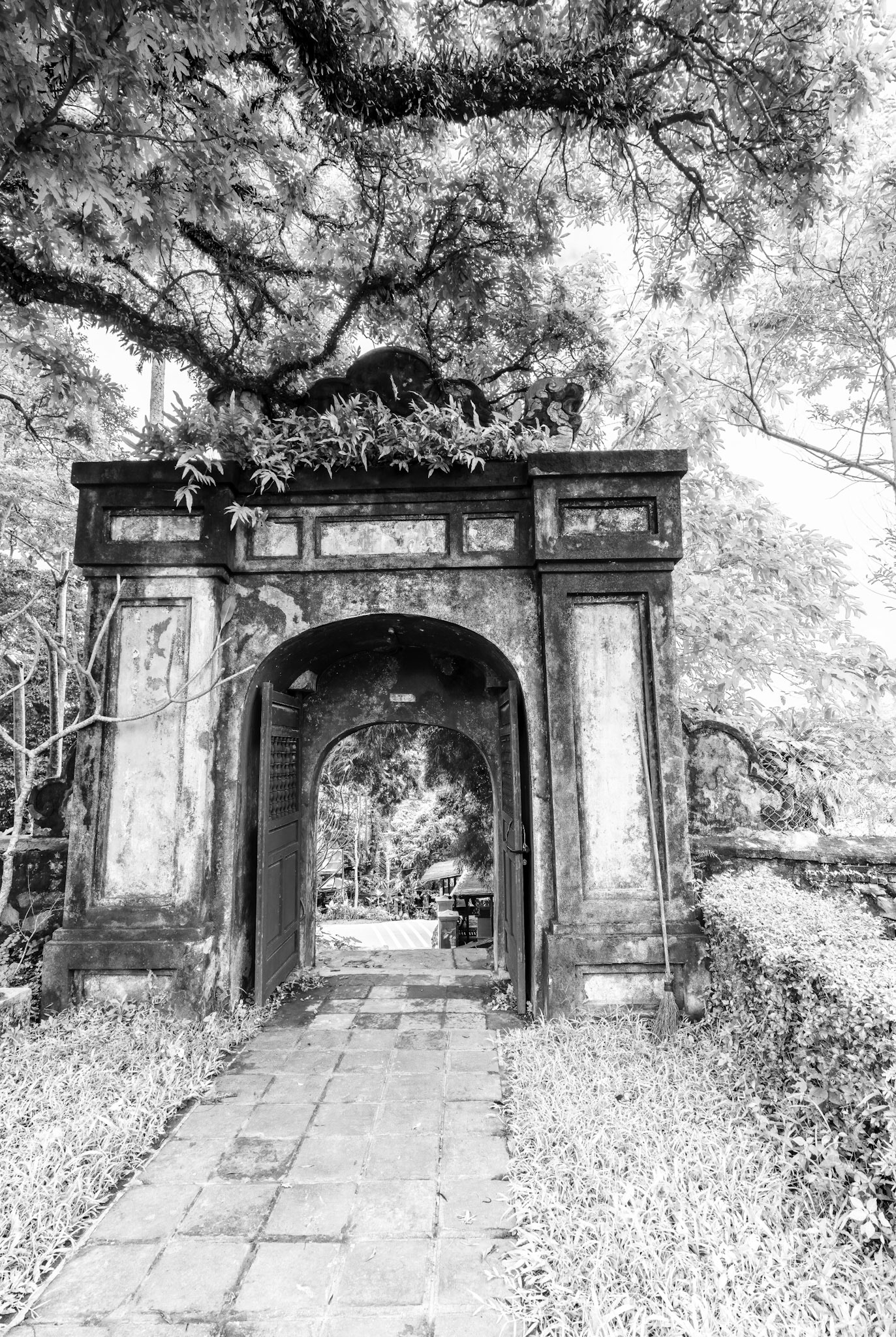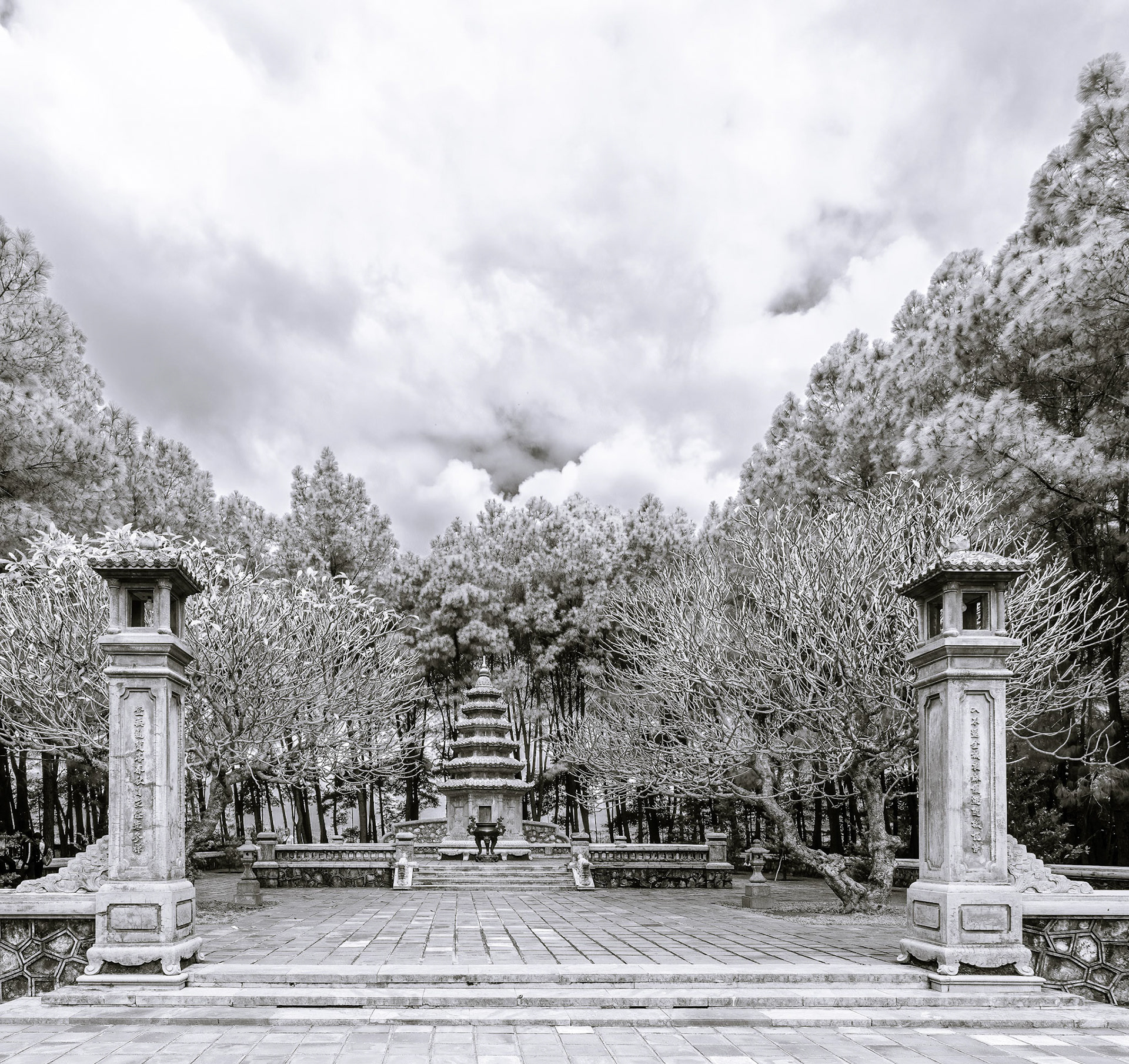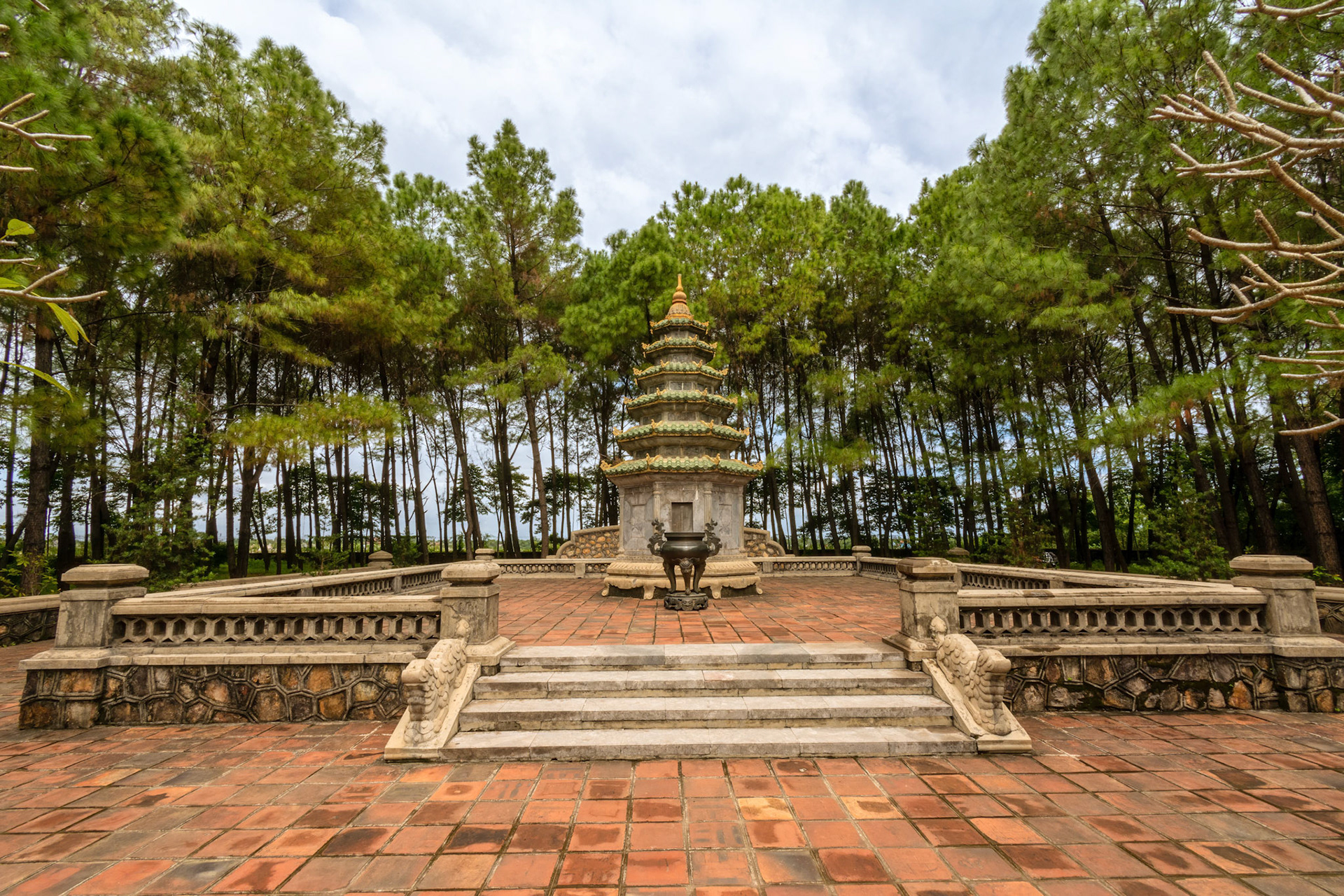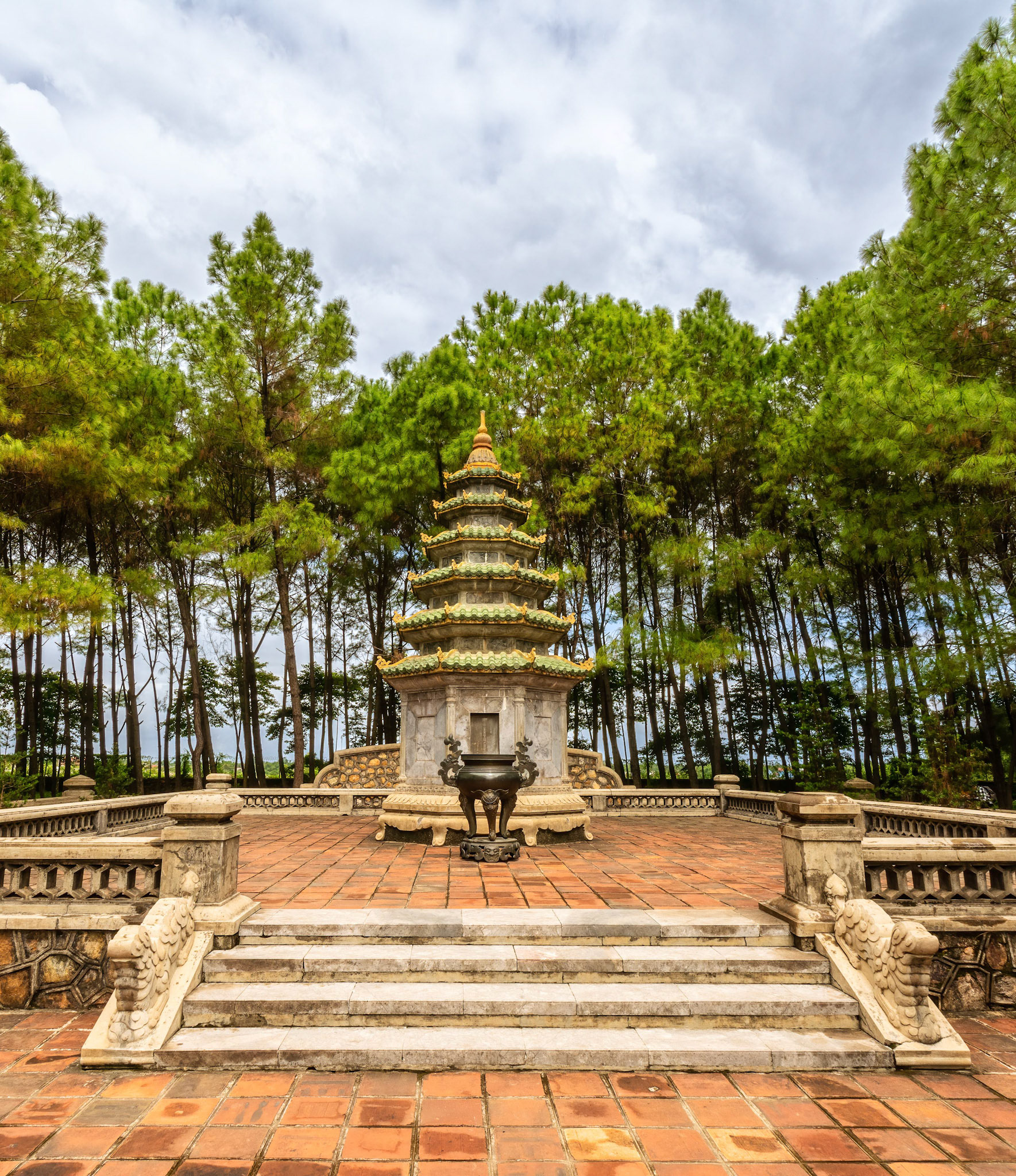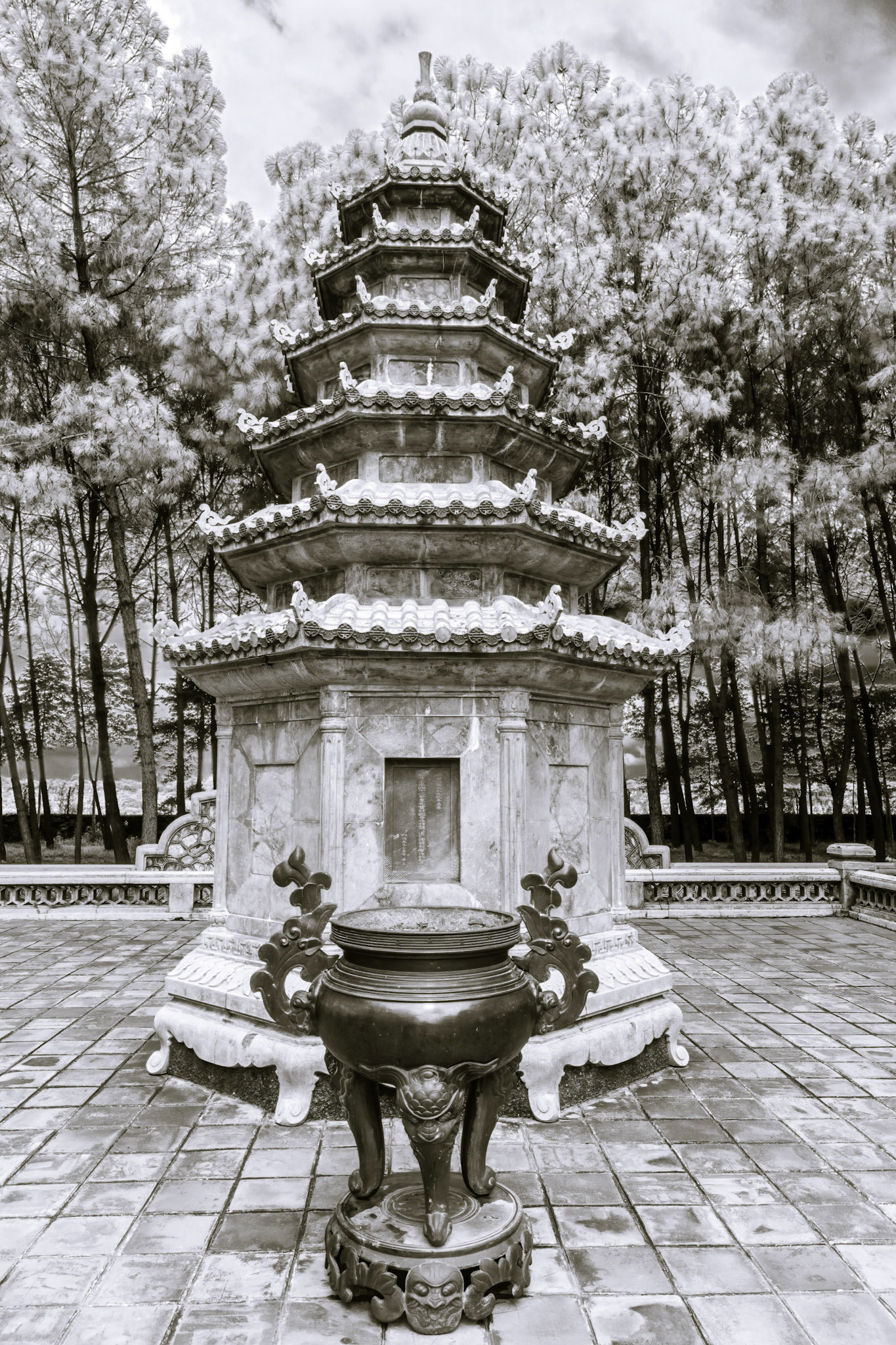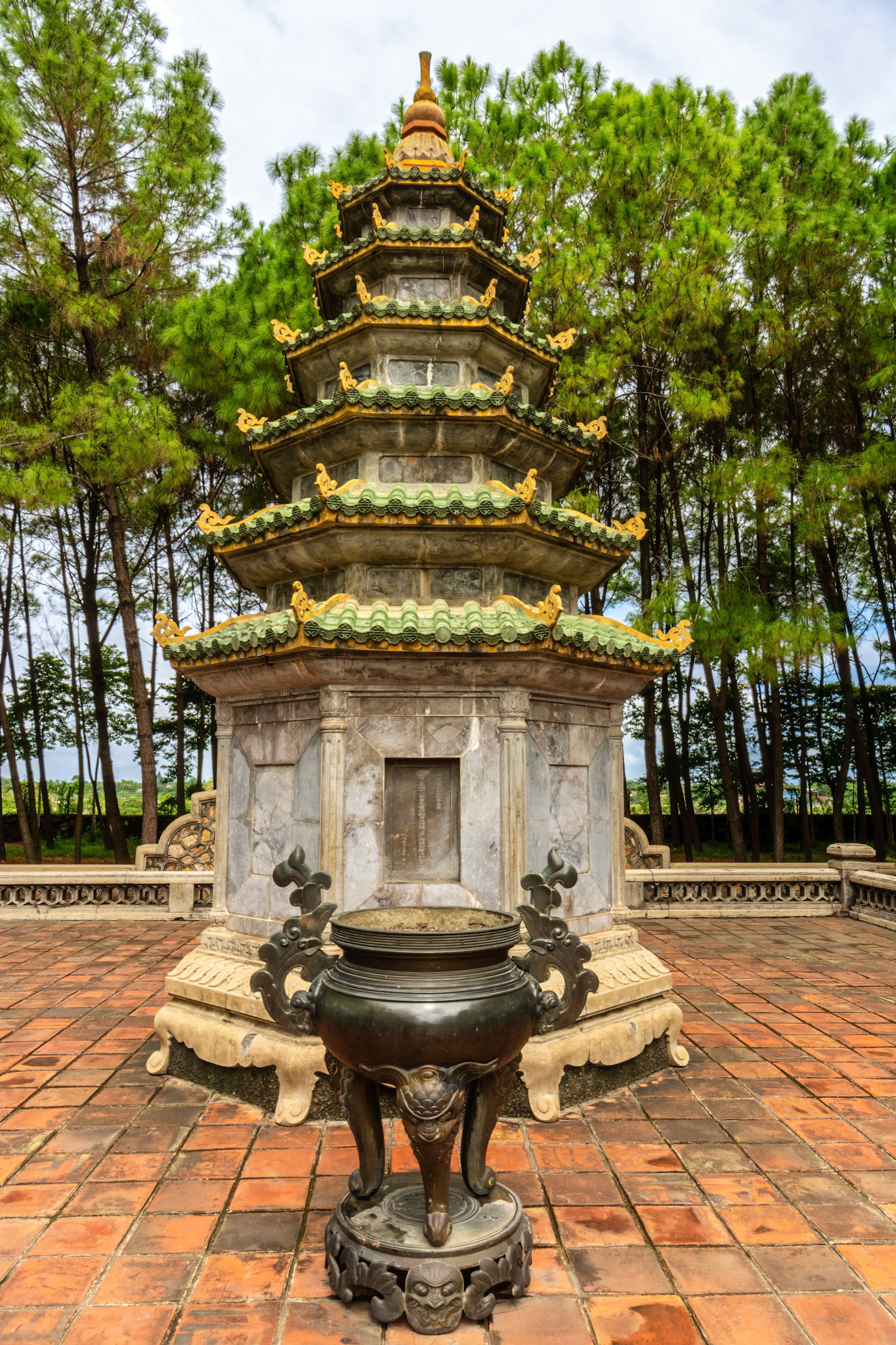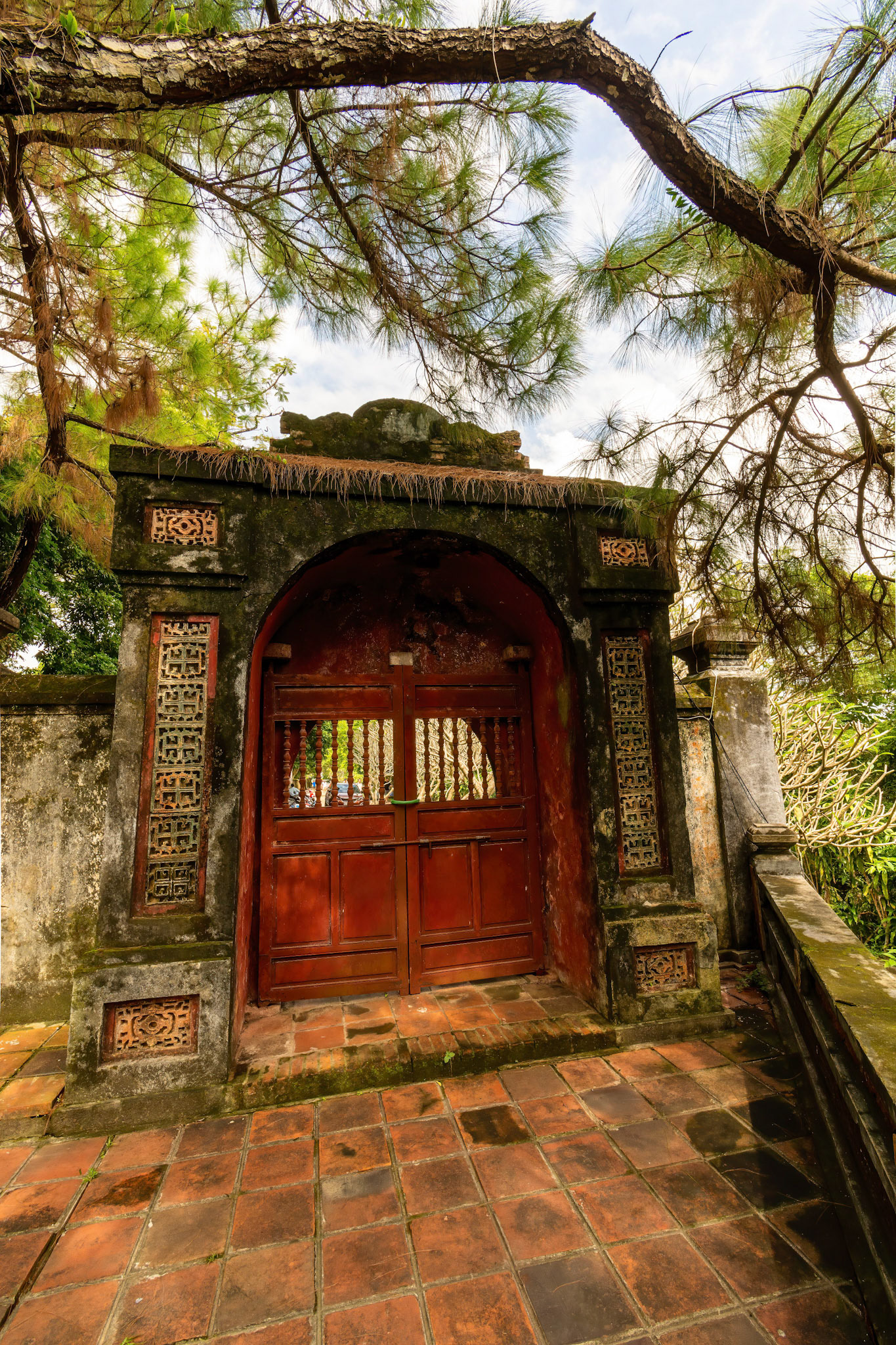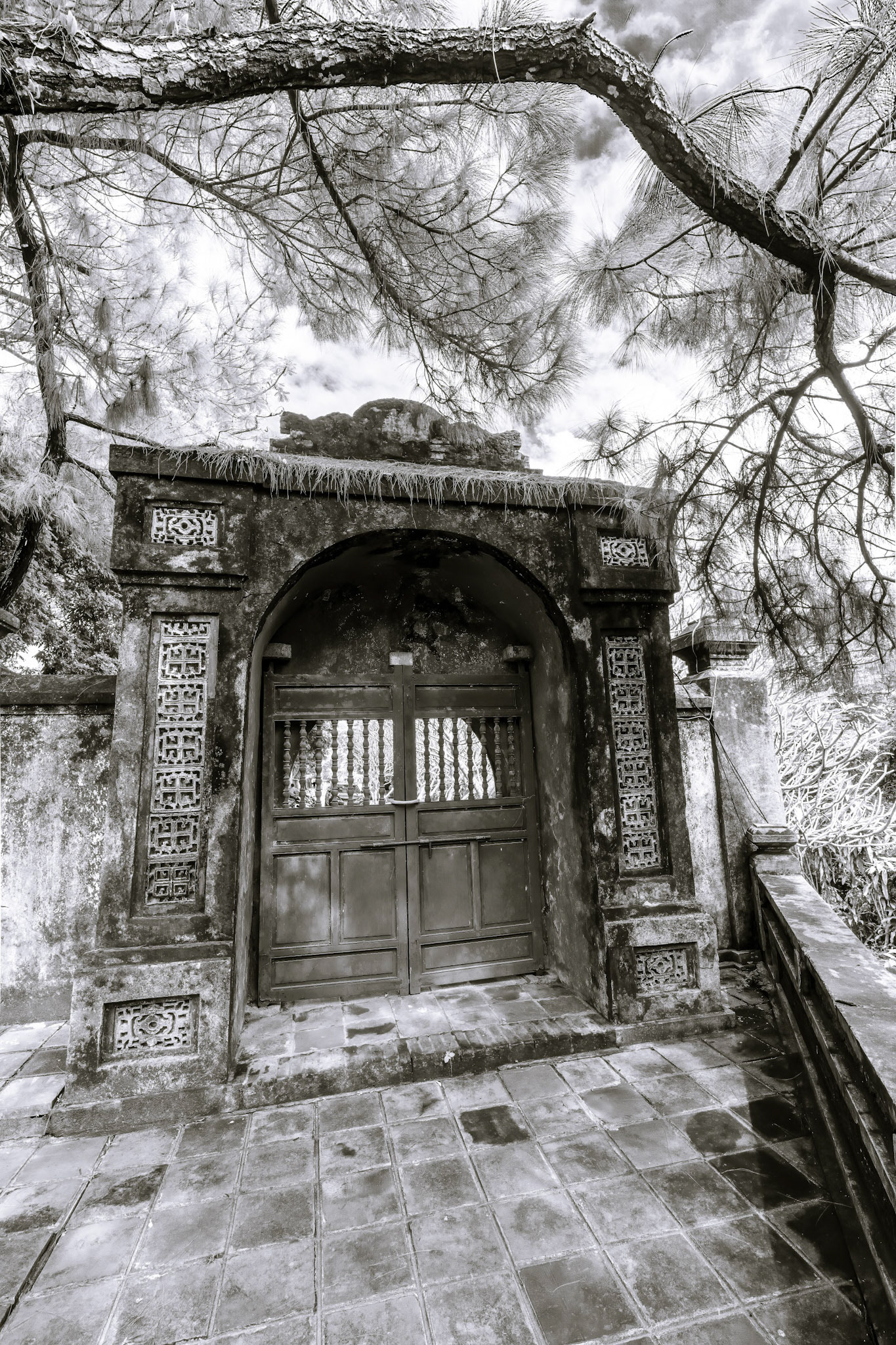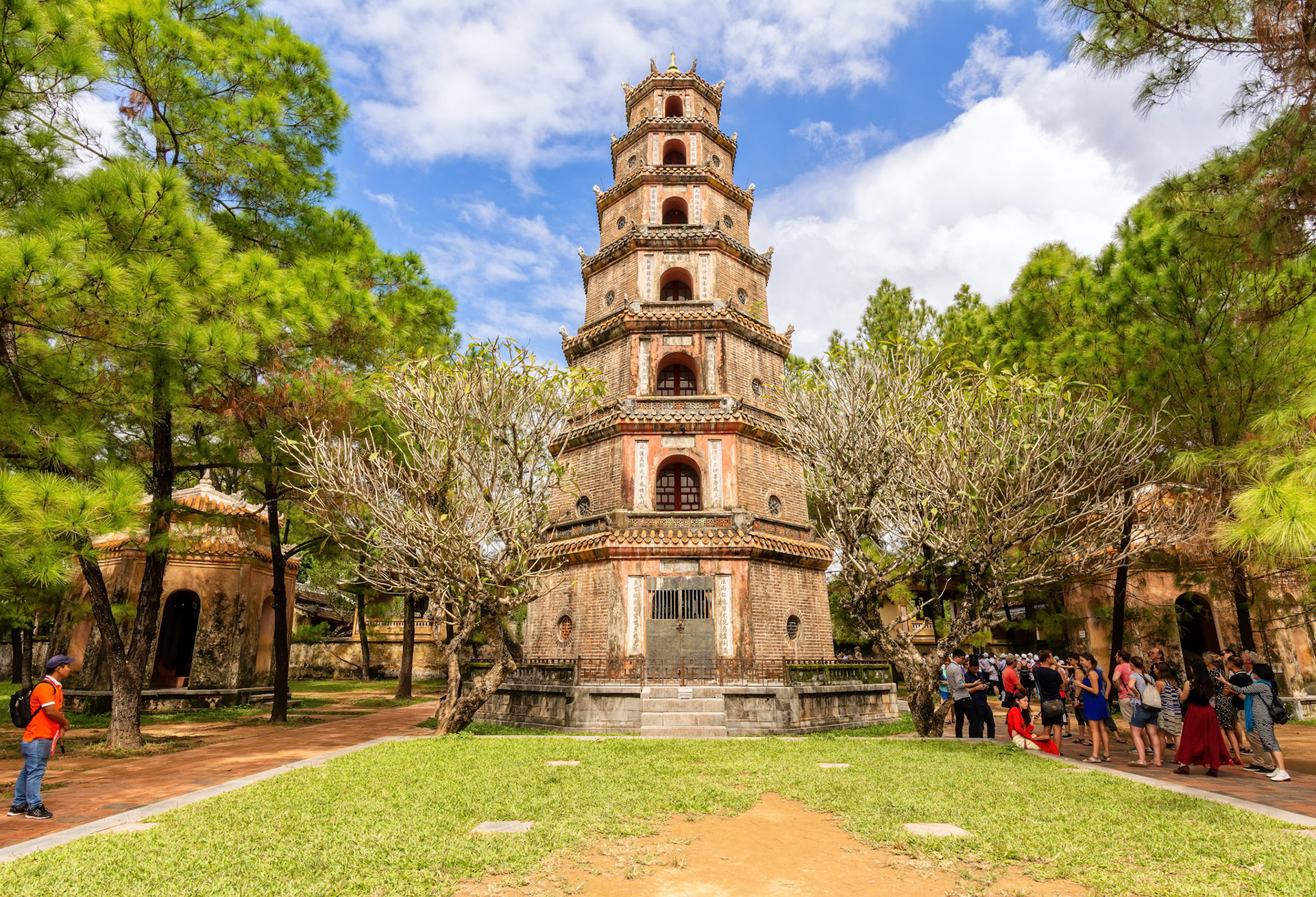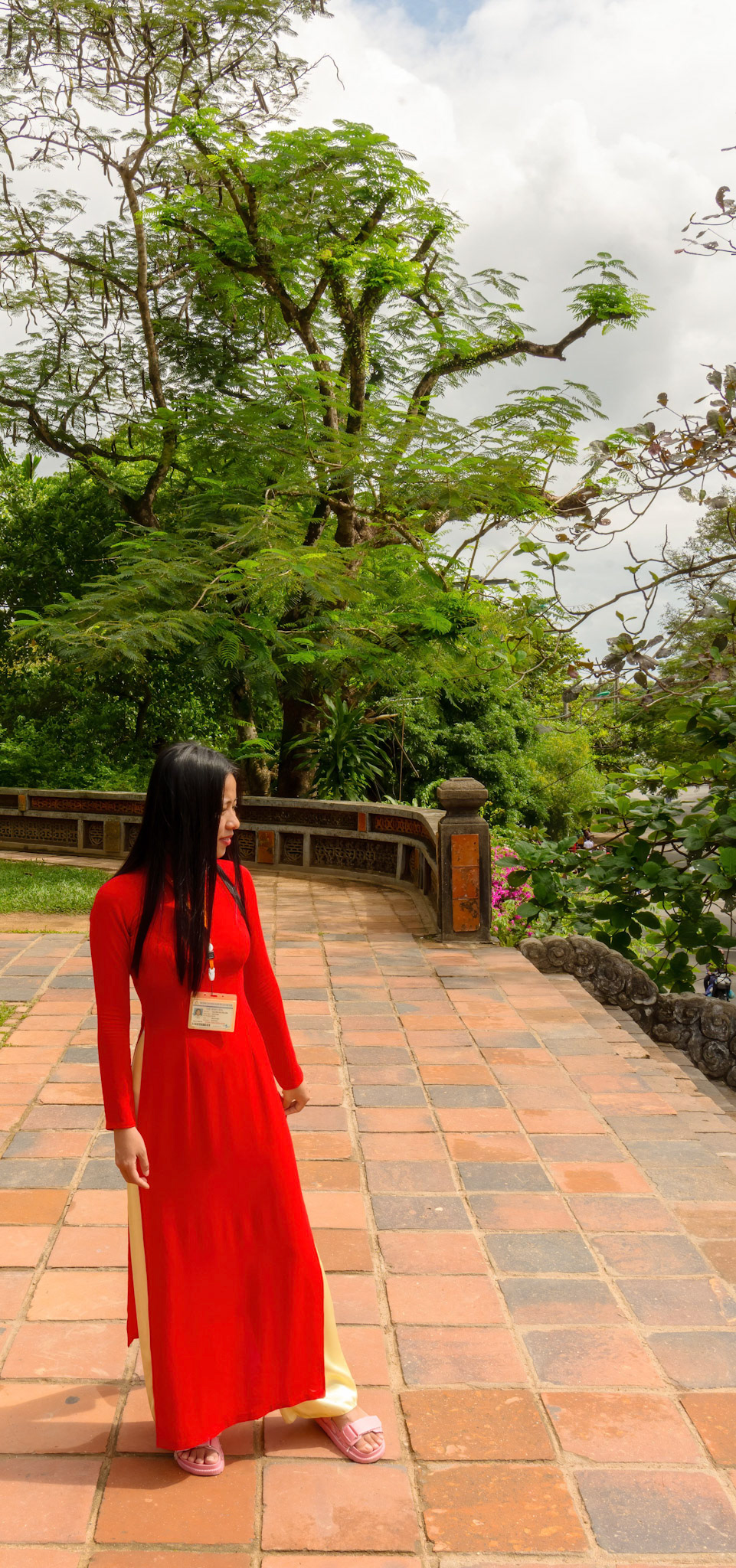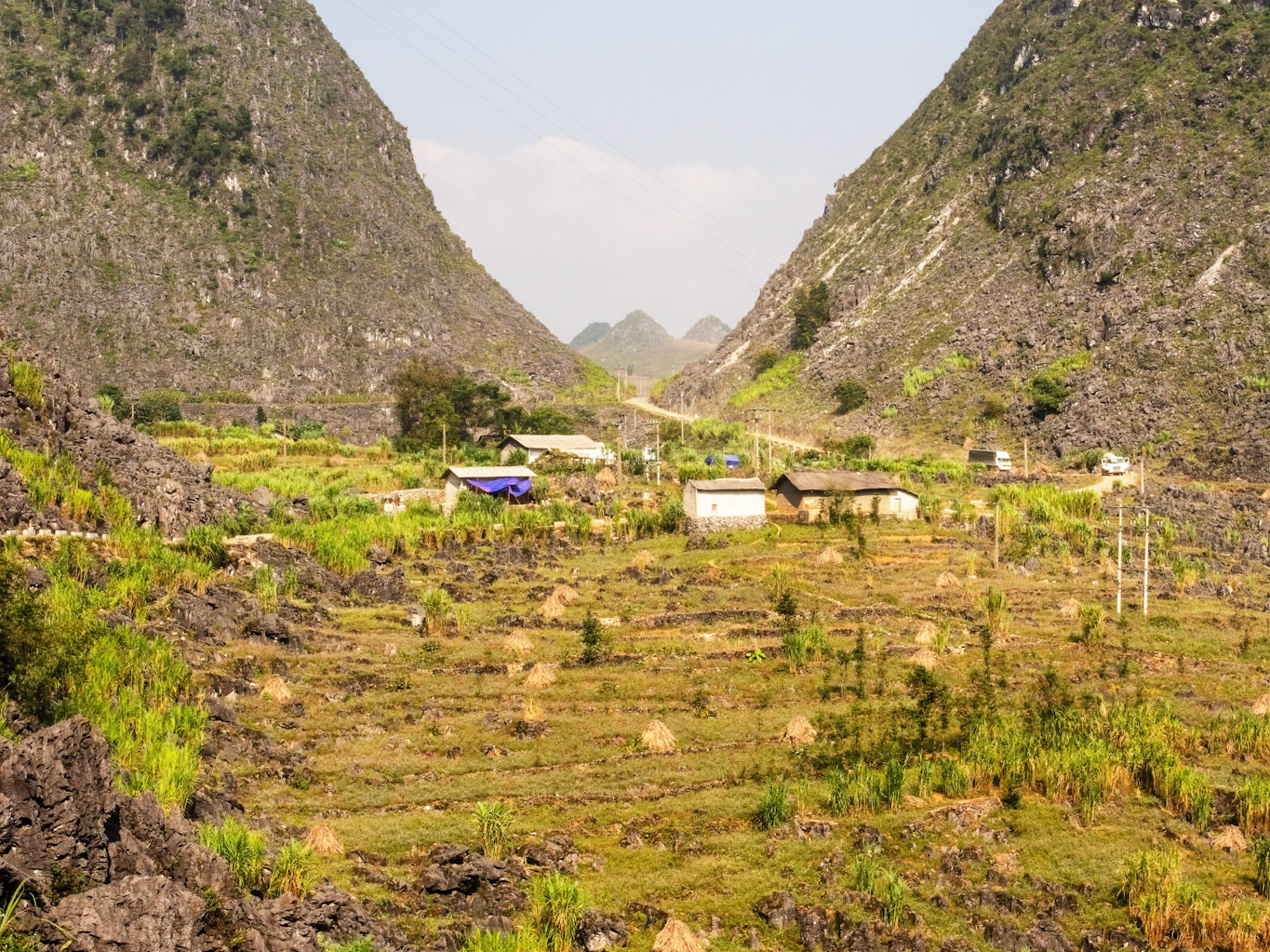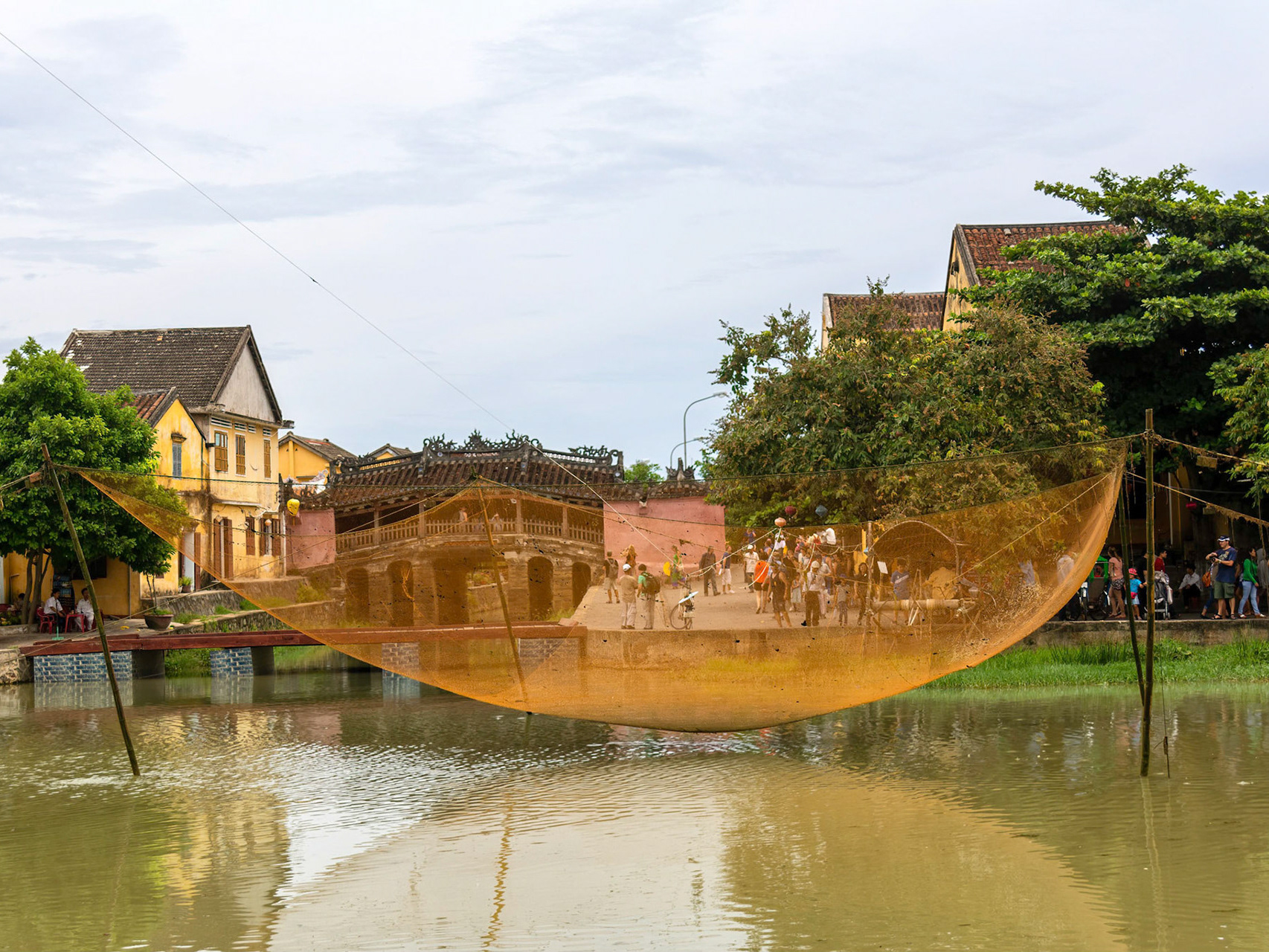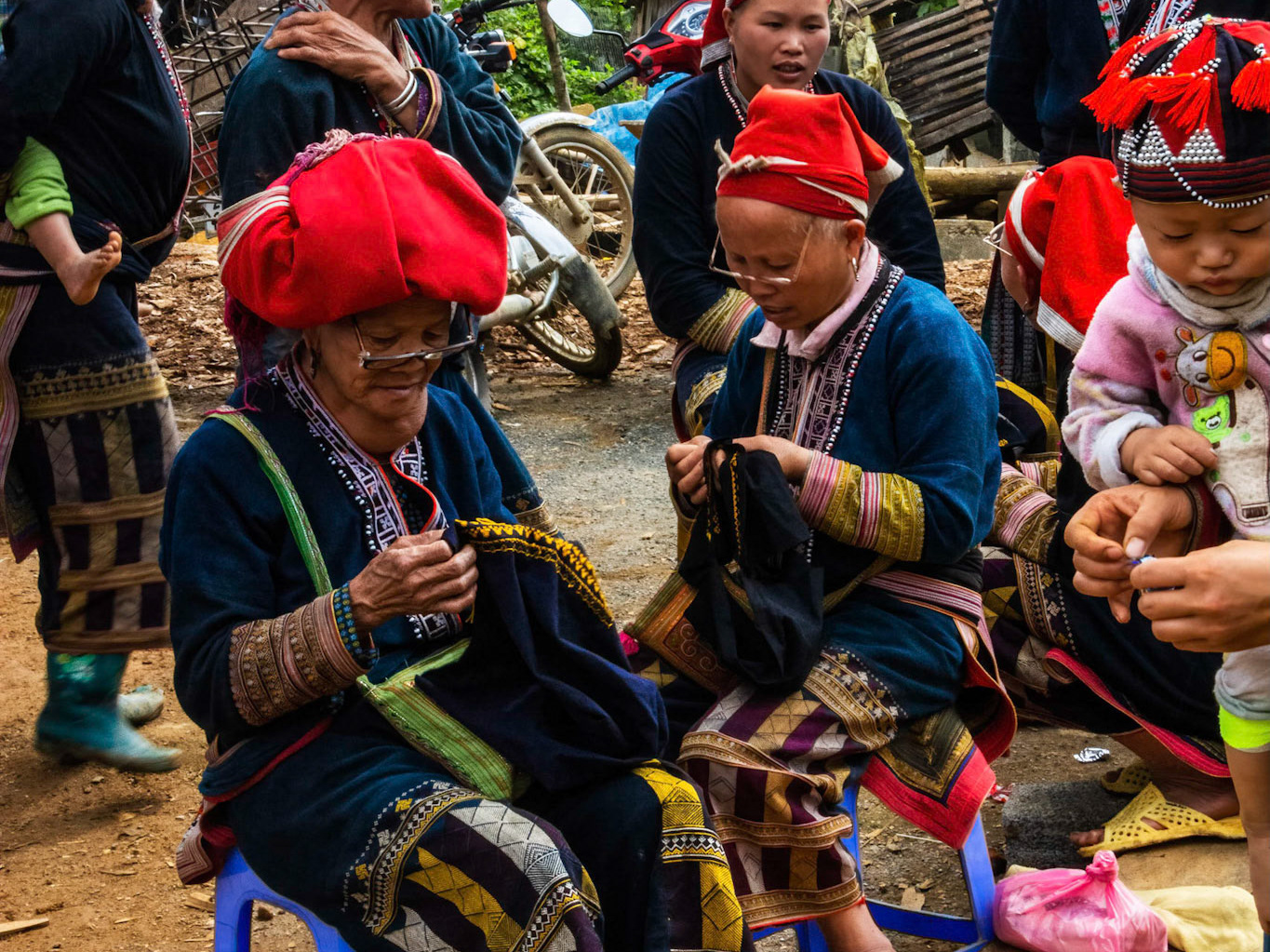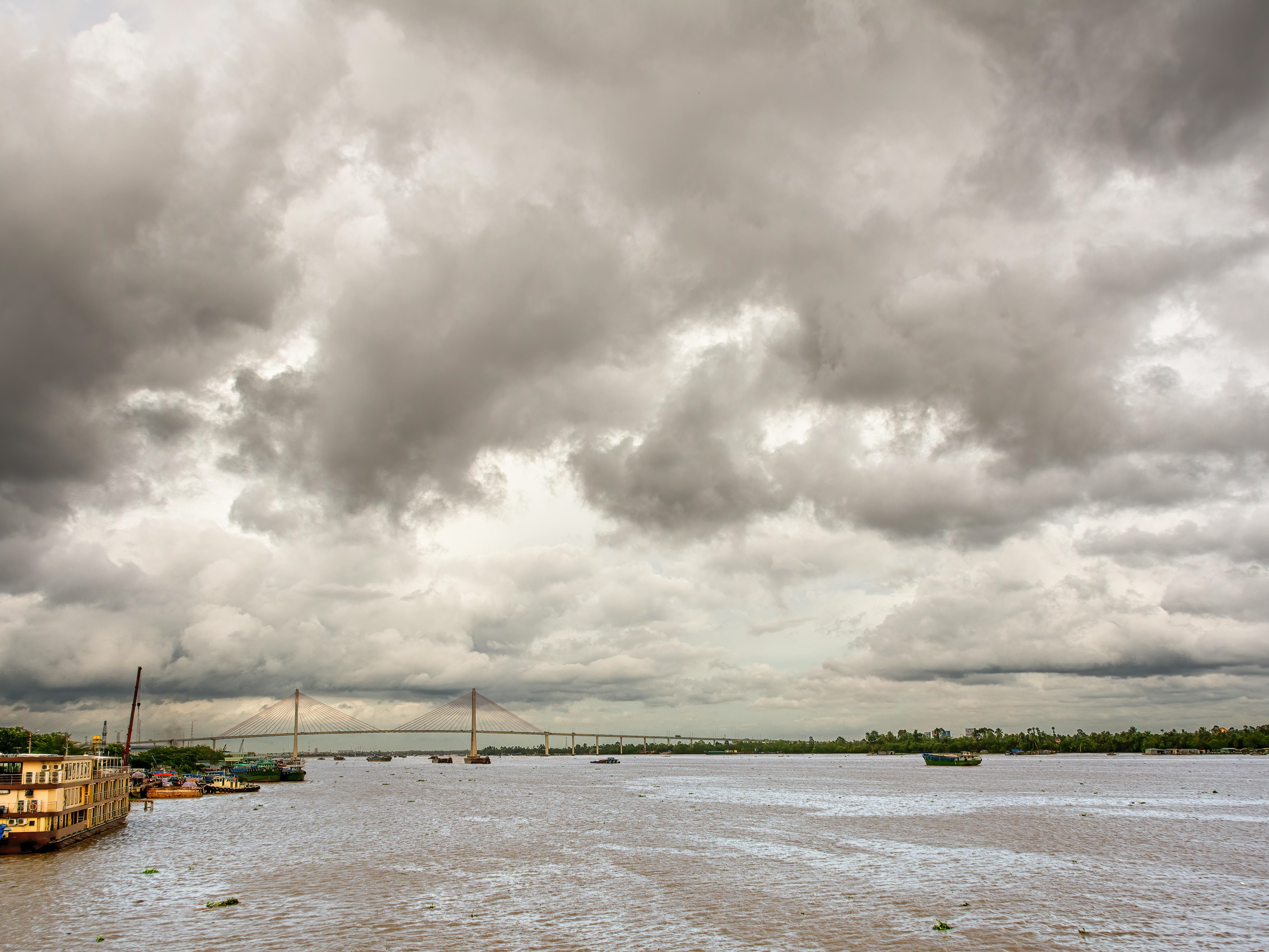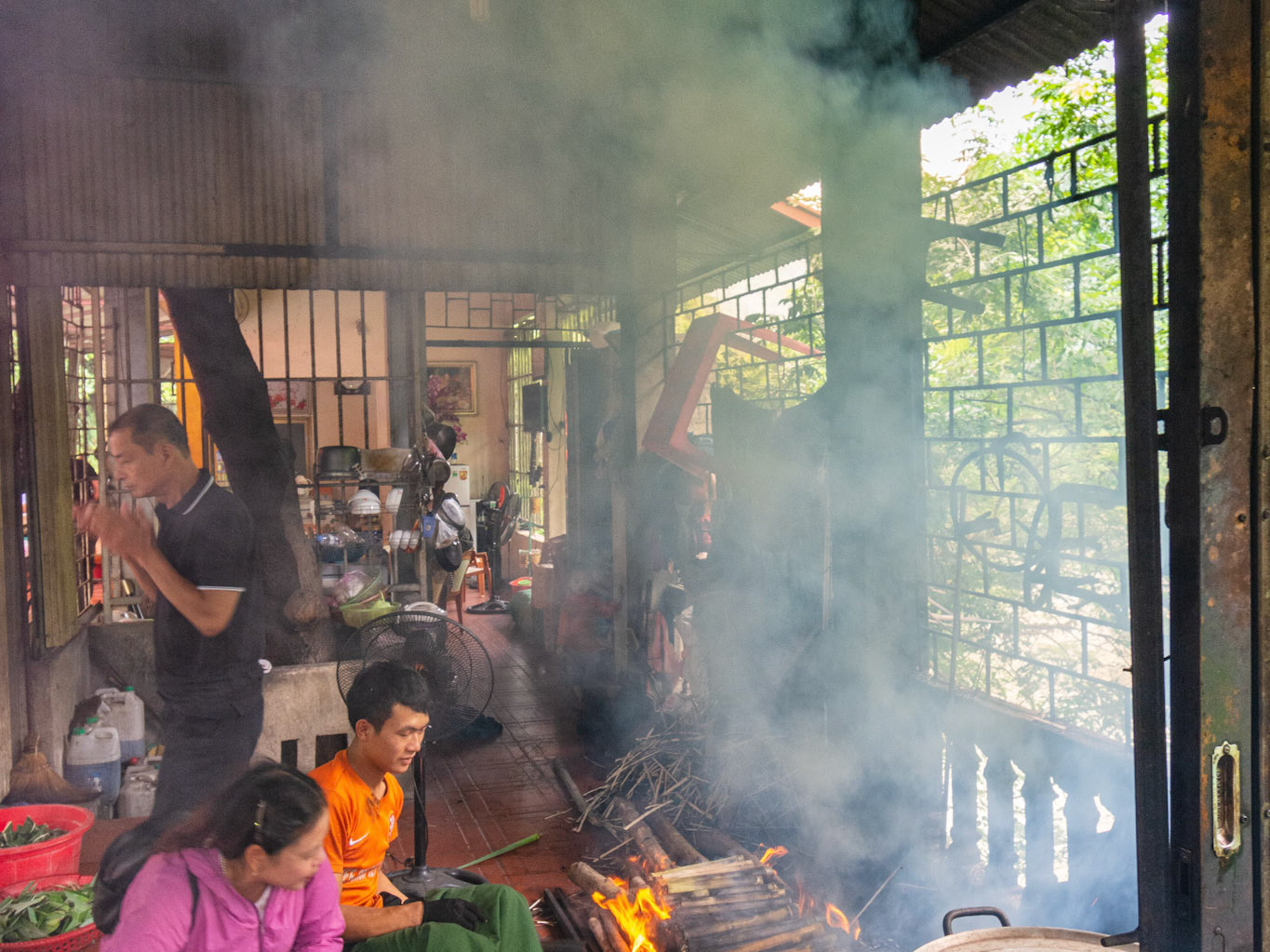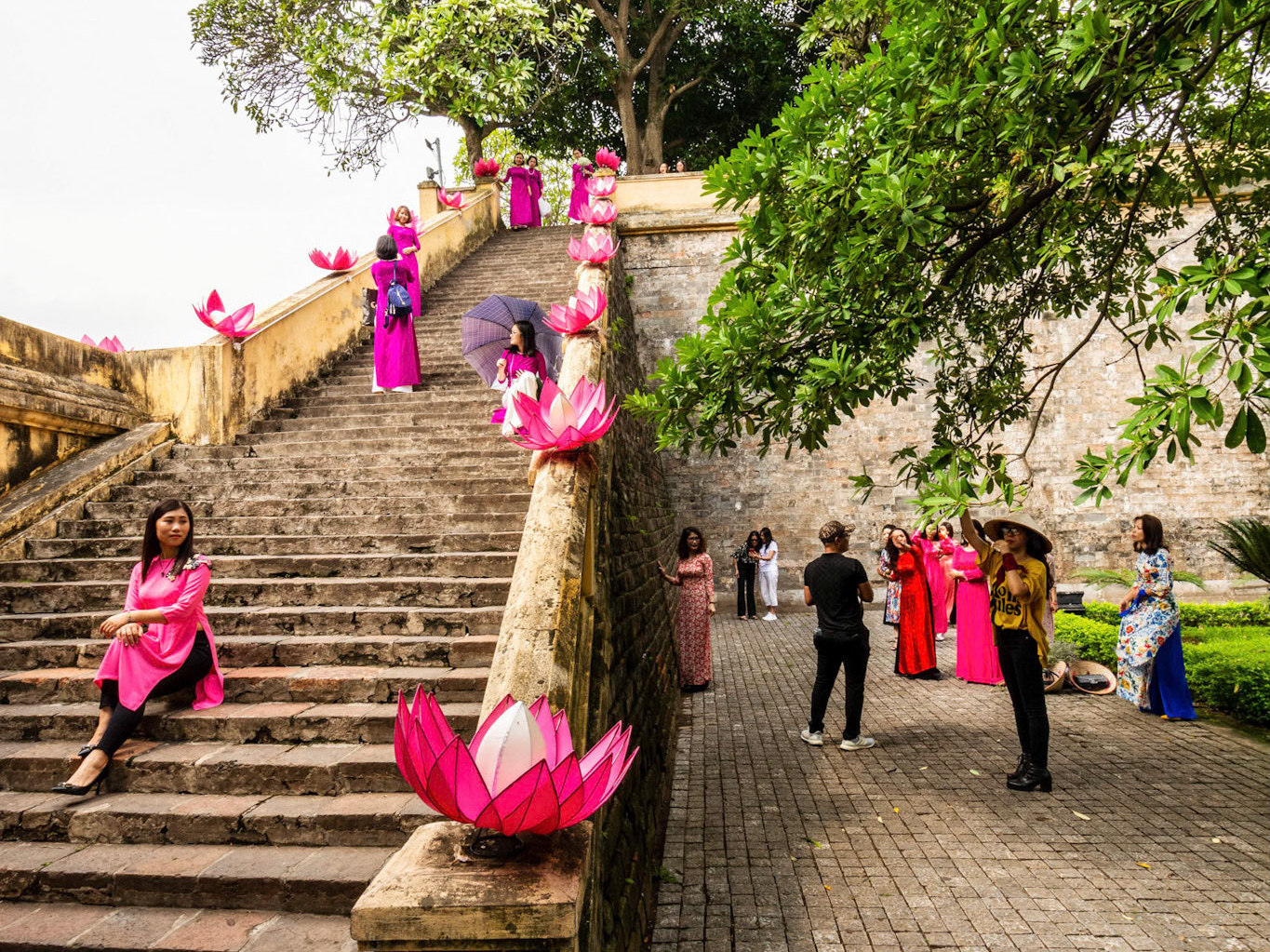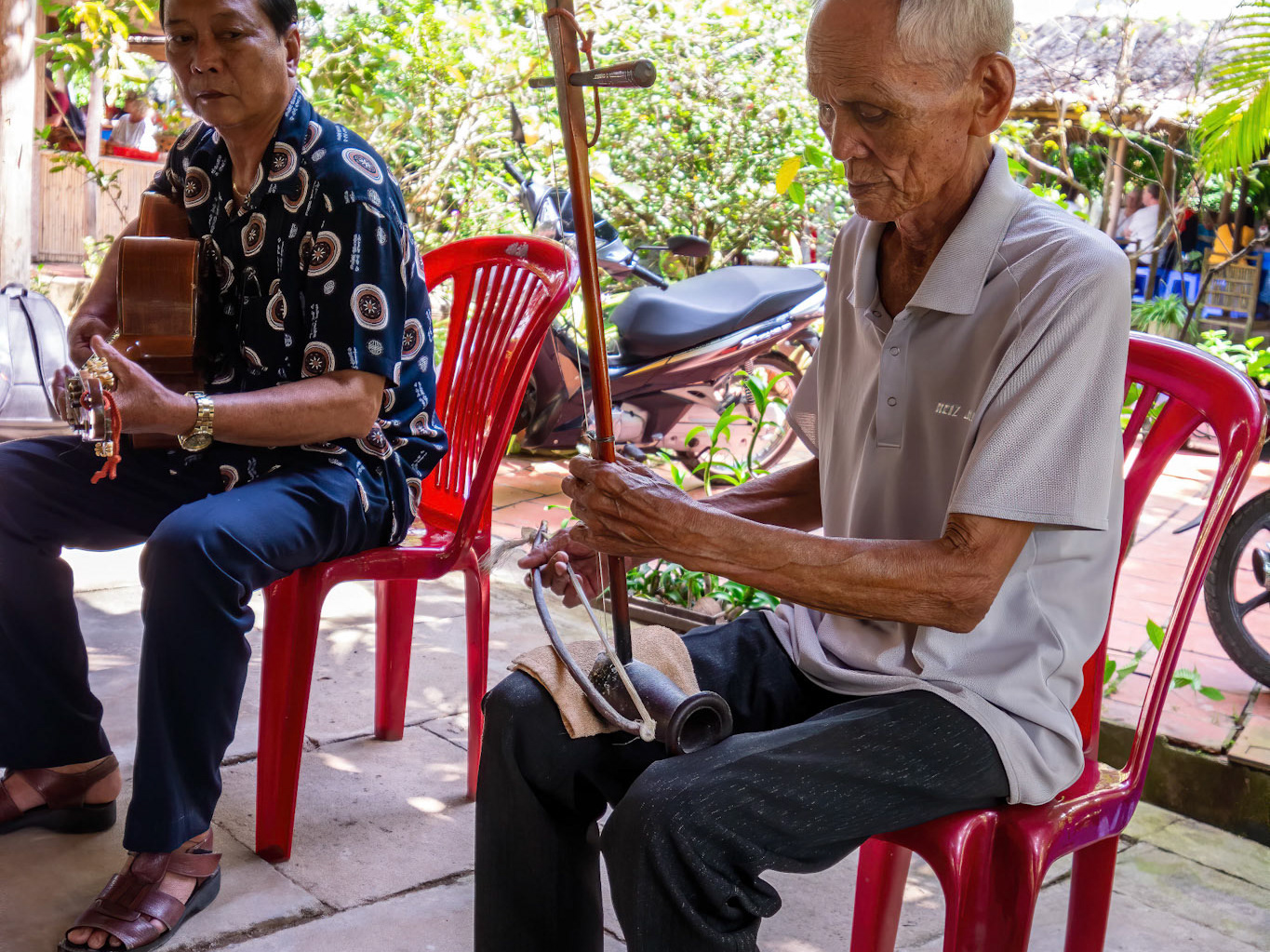My guest house organised a great moderately priced boat tour for me along the Sông Hương (Perfume River) with three stops, including drop off,: Chùa Thiên Mụ (Thiên Mụ Pagoda), Lăng Minh Mạng (Minh Mạng Tomb) and Kinh thành Huế (Imperial City). To make it easier I’ve divided the photos into three albums:
Stop 1 Chùa Thiên Mụ (Thiên Mụ Pagoda), In English the name of this temple translates to the Pagoda of the Celestial Lady, and it's the unofficial symbol of the city. First structures on the site were “Built in 1601 on the order of the first Nguyễn lords, Nguyễn Hoàng,” who, although they were nominally “officials of the ruling Lê Dynasty in Hanoi”, were de-facto rulers of Central Vietnam. Fortuitously as Nguyễn Hoàng was touring the area he was told “the local legend in which an old lady, known as Thiên Mụ (literally "celestial lady"), dressed in red and blue sat at the site, rubbing her cheeks. She foretold that a lord would come and erect a pagoda on the hill to pray for the country's prosperity. She then vanished after making her prophecy. Upon hearing this, Hoang ordered the construction of a temple at the site, thus the beginning of Thiên Mụ Tự.”
In 1844 a 21 metre high seven tiered tower was constructed; it was severely damaged by a cyclone in 1904 and less grandly reconstructed in 1907. During the Second South East Asian War the pagoda was a focal point of resistance to the catholic South Vietnamese President Ngo Dinh Diem, whose policies foolishly heavily discriminated against Buddhists and favored Catholics. During “Vesak, the birthday of Gautama Buddha, … the Buddhist flag was banned from display … while the Vatican flag was displayed to celebrate the anniversary of the consecration of Archbishop Ngo Dinh Thuc, Diem's brother.” This caused a protest at the temple which culminated in the deaths of several of the protesters when they were fired on by the army as they marched toward the local radio station.
